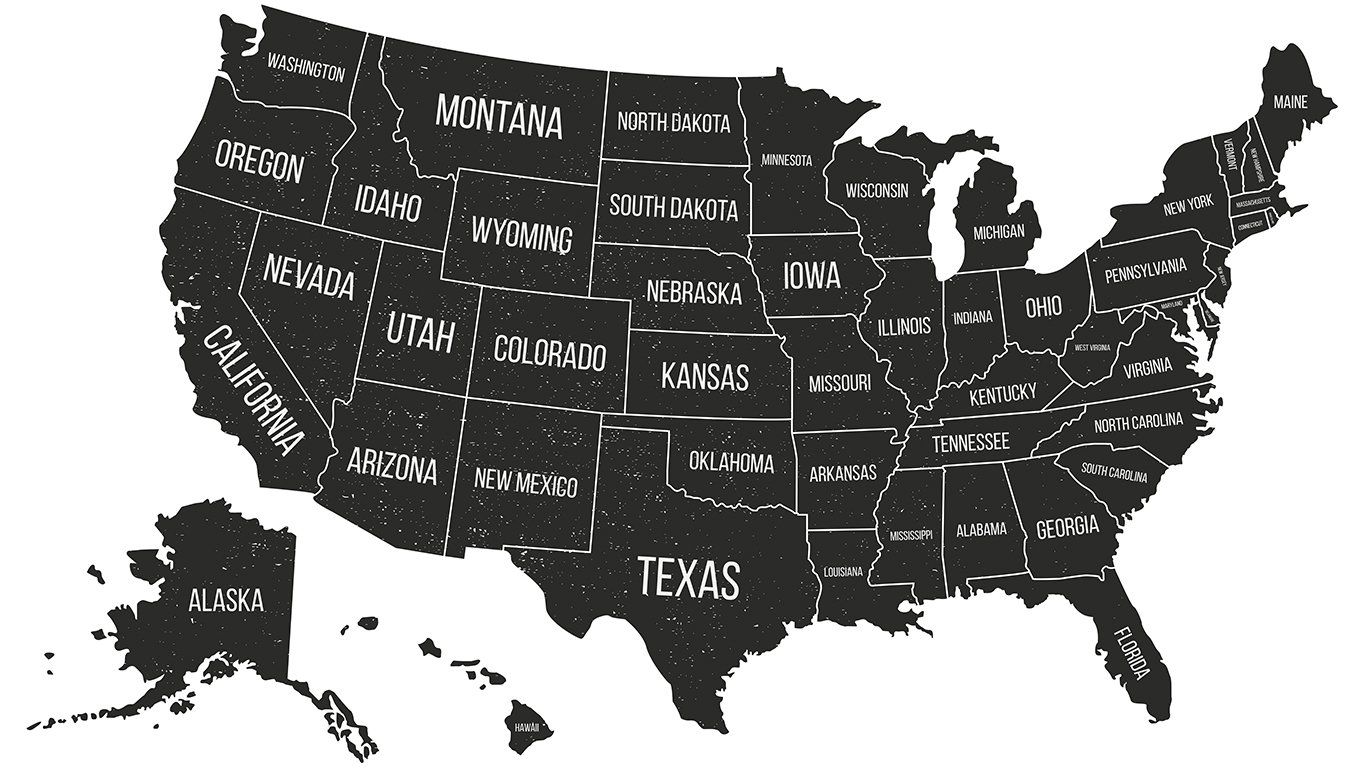

You can practically glean the history of America in the names of all 50 states.
The story of the United States begins in the East and the South and is reflected in the origin of the names of the states. In the East and South, many states owe their monikers to our forebears from England, France, and Spain. These states include New York, Vermont, and Florida. Another influence from the earliest time in our history is Native American culture, apparent in state names such as Massachusetts, Connecticut, and Alabama.
Native American place names figure prominently as we move westward, in states such as Arkansas, Oklahoma, Minnesota, and North and South Dakota. About half of America’s states owe their names to Native American origin. Names with Spanish origins can be found in the West, including Colorado, New Mexico, and California. Hawaii and Alaska’s names are derived from words describing the lands in the language of the native people who inhabited those areas before the arrival of Europeans.
To compile a list of how the states got their names, 24/7 reviewed information from state websites and online resources. Population data was obtained from worldpopulationreview.com.
Click here to read about how each state got its name.

Alabama
> Joined United States: Dec. 14, 1819 (22nd state to join)
> Capital: Montgomery
> Population: 4,888,949
The genesis of the Alabama name is believed to have come from a fusion of two Choctaw words, Alba and Amo. Alba means “vegetation,” while Amo refers to “gatherer.” The name “vegetation gatherers” would fit the Alabama Indians who cleared the land for farming.
[in-text-ad]
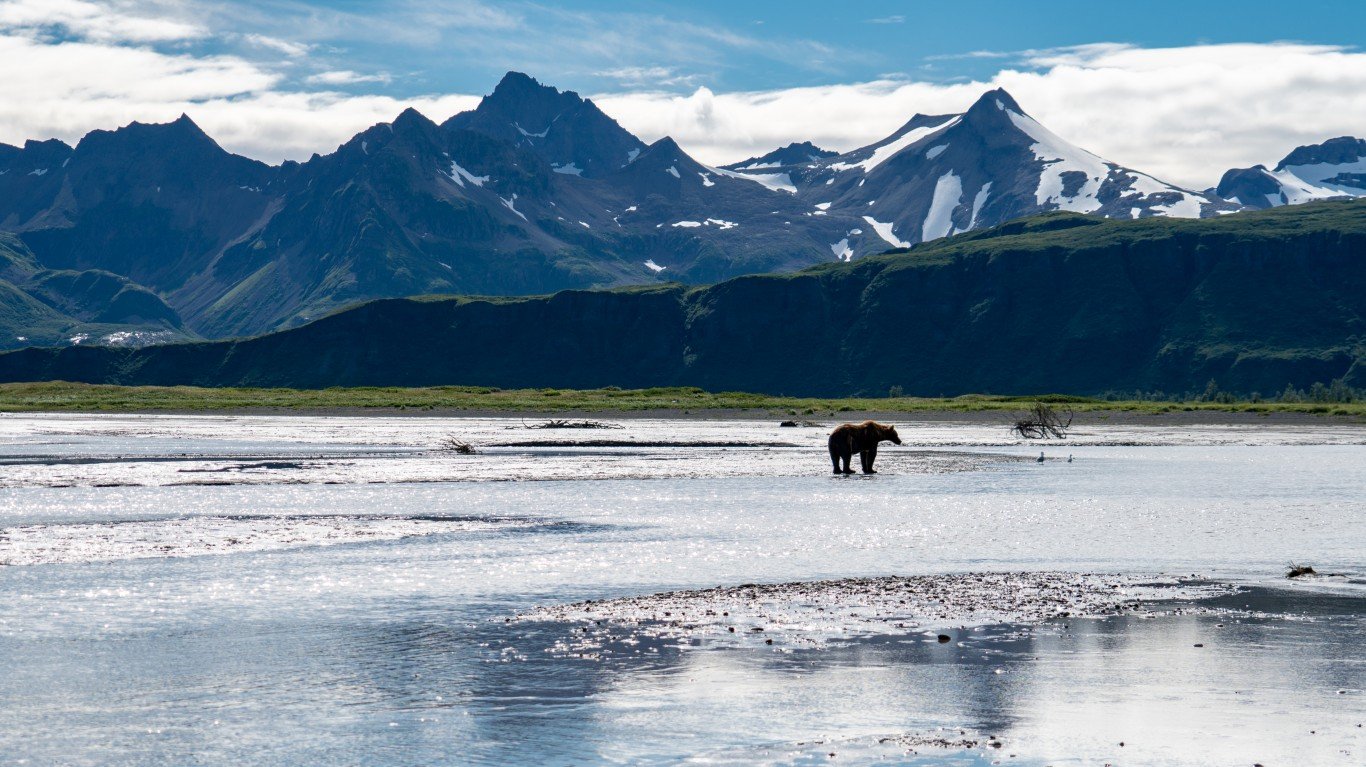
Alaska
> Joined United States: Jan. 3, 1959 (49th state to join)
> Capital: Juneau
> Population: 738,068
The name “Alaska” comes from the Aleut word “Alyeska” which means “great land.” The Aleuts are the indigenous people of the Aleutian Islands and western Alaska.

Arizona
> Joined United States: Feb. 14, 1912 (48th state to join)
> Capital: Phoenix
> Population: 7,123,898
It is not clear how Arizona got its name. Historian James H. McClintock believes the name was derived from a Native American place name that sounded like Aleh-zon or Ali-Shonak, which meant “small spring” or “place of the small spring,” according to the Southern Arizona Guide.
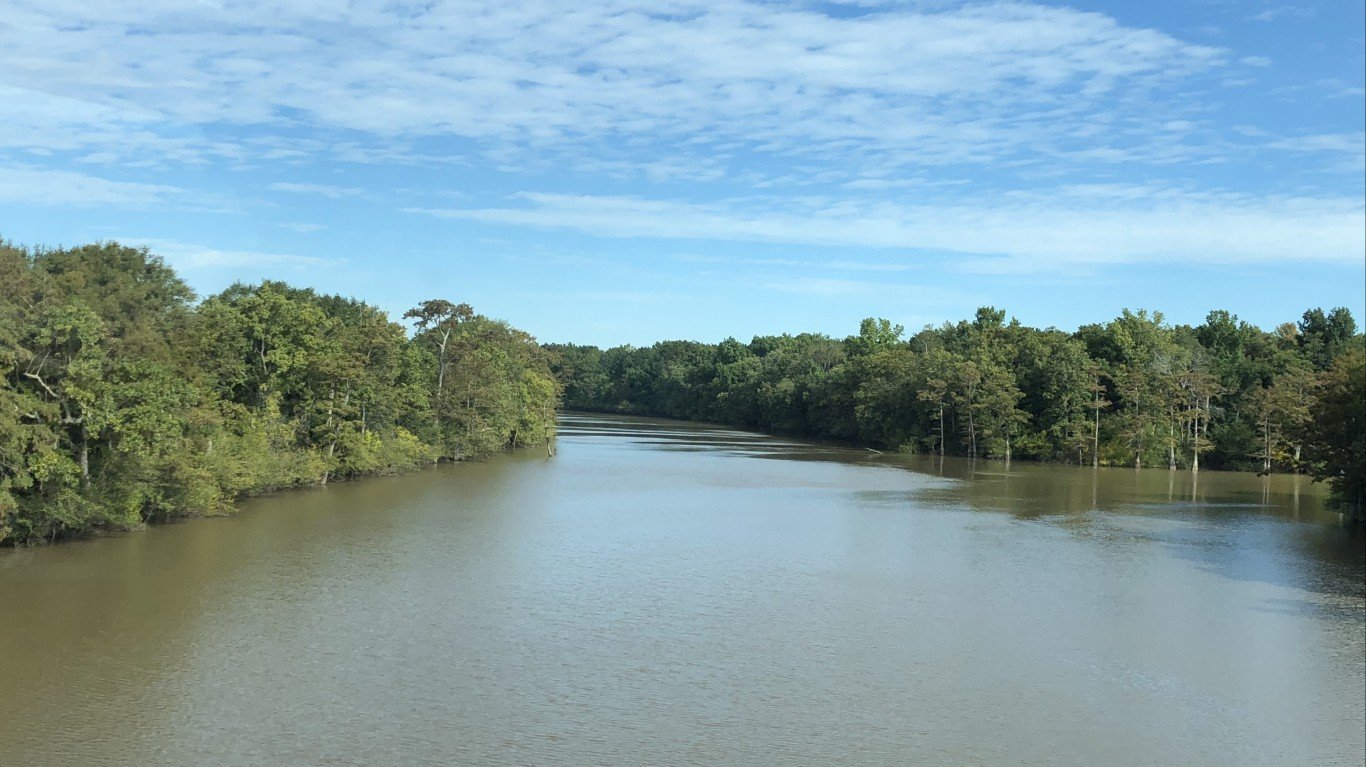
Arkansas
> Joined United States: June 15, 1836 (25th state to join)
> Capital: Little Rock
> Population: 3,020,327
The word “Arkansas” came from the Quapaw Native Americans. The Quapaws were known as the “people who live downstream,” or Ugakhopag. “The Native Americans who spoke Algonquian and lived on the Ohio Valley called the Arkansas, which means “south wind.”
[in-text-ad-2]

California
> Joined United States: Sept. 9, 1850 (31st state to join)
> Capital: Sacramento
> Population: 39,776,830
Credit the Spanish conquistadors for naming California. The name of the nation’s largest state comes from the Califia, a legendary island paradise described in a Spanish romance novel from the early 16th century.

Colorado
> Joined United States: Aug. 1, 1876 (38th state to join)
> Capital: Denver
> Population: 5,818,049
Another state whose name owes it origins to the Spanish is Colorado. The state’s name means “colored red” or “color rojo” in Spanish. It was used for the Colorado River because of the abundance of red sandstone soil in the region.
[in-text-ad]
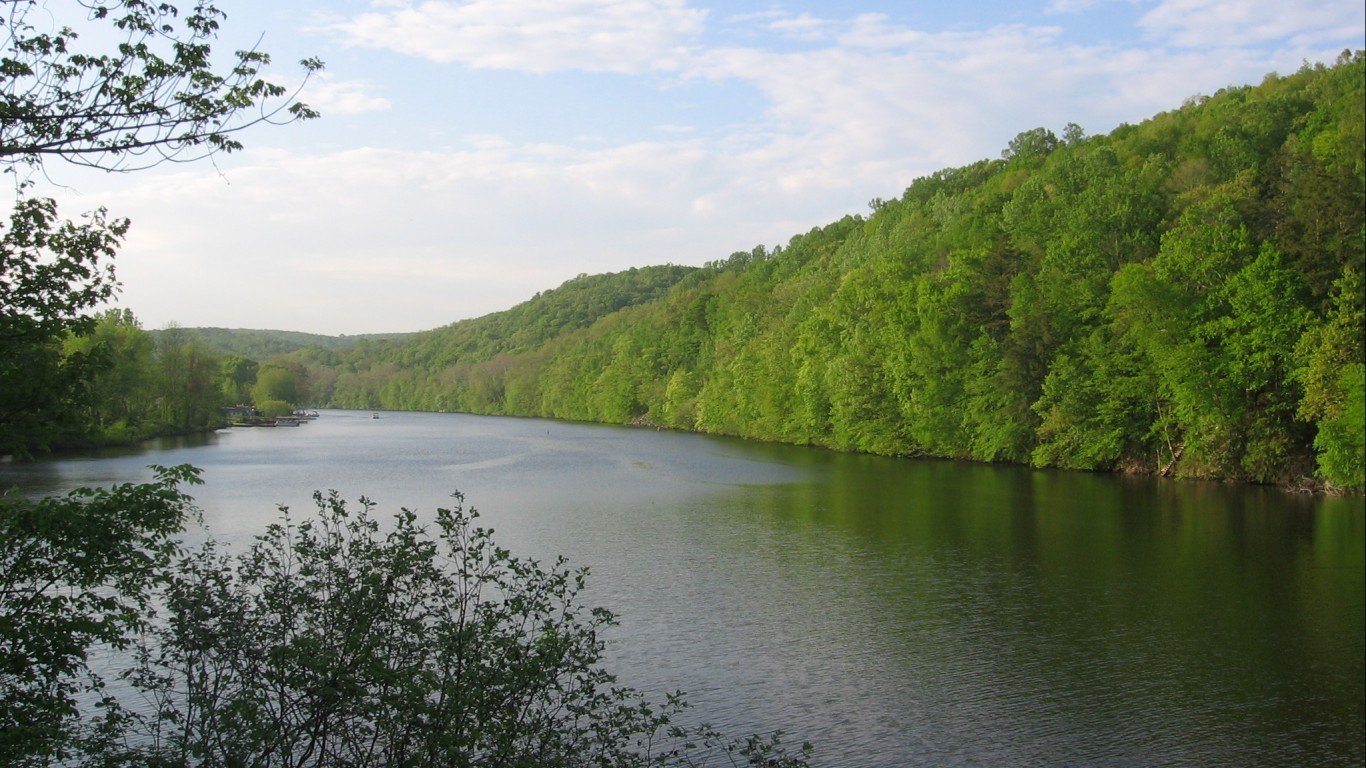
Connecticut
> Joined United States: Jan. 9, 1788 (5th state to join)
> Capital: Hartford
> Population: 3,588,683
The Dutch were the first Europeans to reach Connecticut in 1614. But there were already Native Americans in what would become the Nutmeg State. The name “Connecticut” is derived from the Algonquian word “quinnehtukqut” that means “beside the long tidal river.”
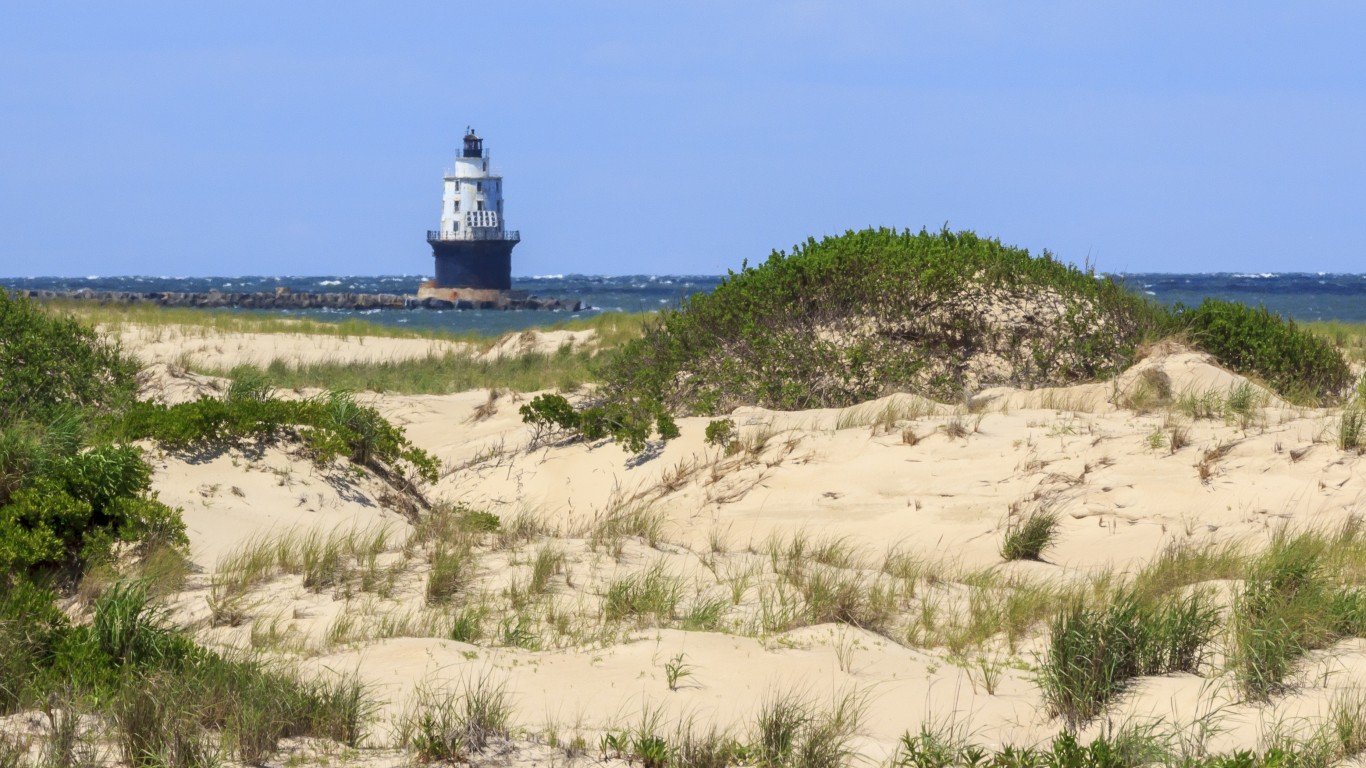
Delaware
> Joined United States: Dec. 7, 1787 (1st state to join)
> Capital: Dover
> Population: 971,180
Delaware, the first state to ratify the Constitution, owes its name to explorer Samuel Argall, who named the Delaware River and Bay for Virginia Gov. Thomas West, Lord De La Warr. The state takes its name from the river and bay.
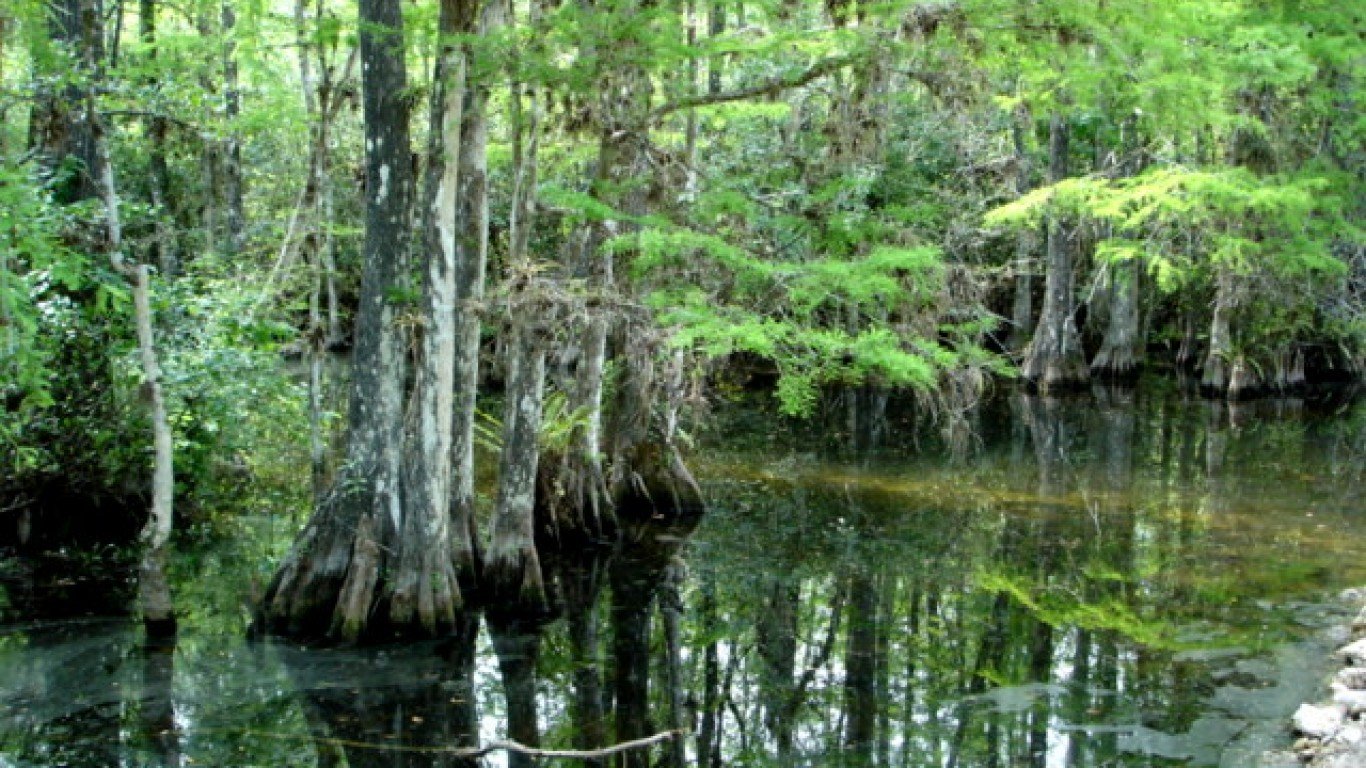
Florida
> Joined United States: March 3, 1845 (27th state to join)
> Capital: Tallahassee
> Population: 21,312,211
Famed Spanish explorer Ponce de Leon may not have found the fountain of youth, but he is credited with naming Florida, as the first European to reach it. The region was named by de Leon in 1513 and it comes from the Spanish word “florido,” which means “full of flowers.”
[in-text-ad-2]

Georgia
> Joined United States: Jan. 2, 1788 (4th state to join)
> Capital: Atlanta
> Population: 10,545,138
Georgia, founded by James Oglethorpe, was named for King George II of England, who granted the colony its charter in 1732. The –ia suffix means “state of” and comes from the Greek language.

Hawaii
> Joined United States: Aug. 21, 1959 (50th state to join)
> Capital: Honolulu
> Population: 1,426,393
There are several theories of how America’s youngest state got its name. One theory maintains that “Hawai’i” is derived from the word “owhyhee,” which means homeland in native Hawaiian. Another theory postulates that the name comes from a combination of the words “Hawa” and “ii” and means a small or new homeland. Still another belief is that the name originates from the Polynesian Hawaii Loa, who discovered the islands, according to an ancient local legend.
[in-text-ad]
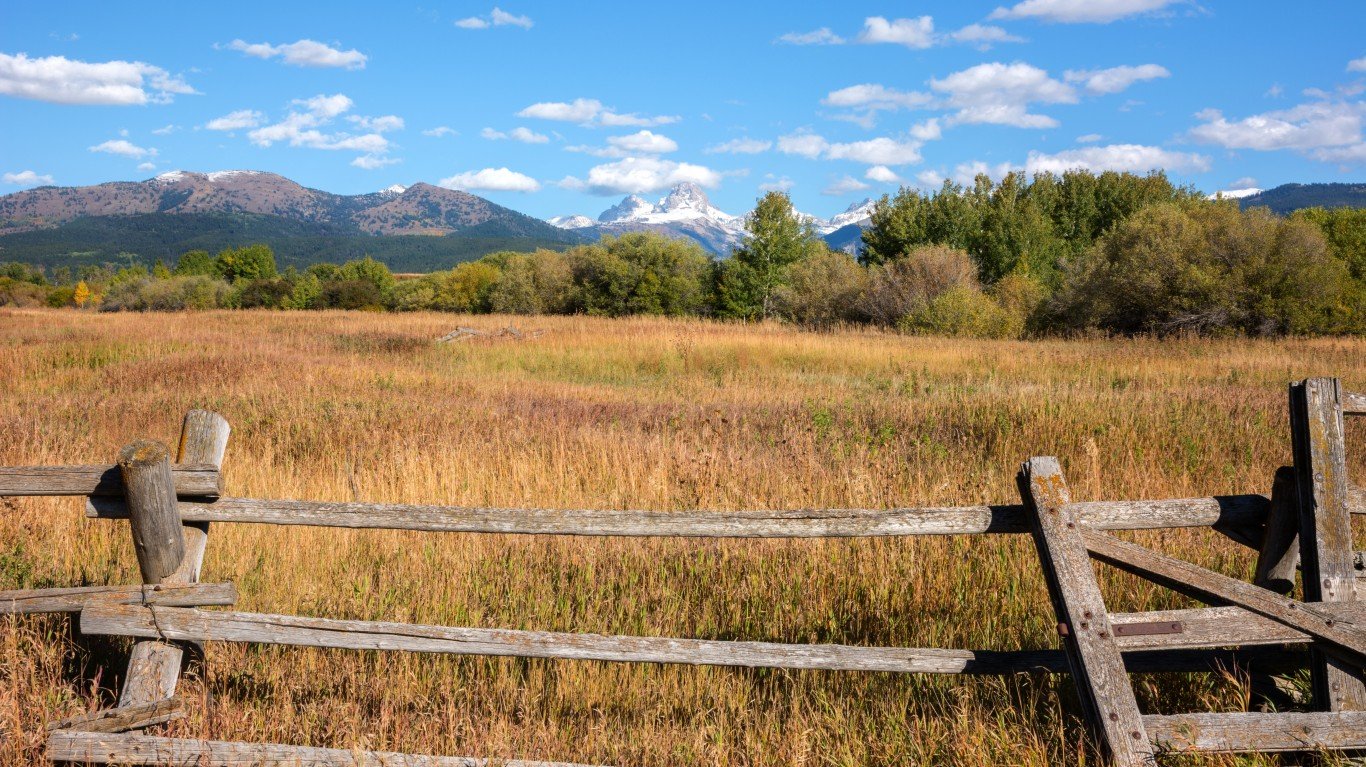
Idaho
> Joined United States: July 3, 1890 (43rd state to join)
> Capital: Boise
> Population: 1,753,860
Idaho, a state made famous in a B-52s song, may sound like a Native American name, but the word is made up. “Idaho” was created by mining lobbyist George M. Willing, who insisted it was a Native American Shoshone expression meaning “gem of the mountains” for the area around Pike’s Peak. By the time it was discovered the name was phoney, it was already being used.
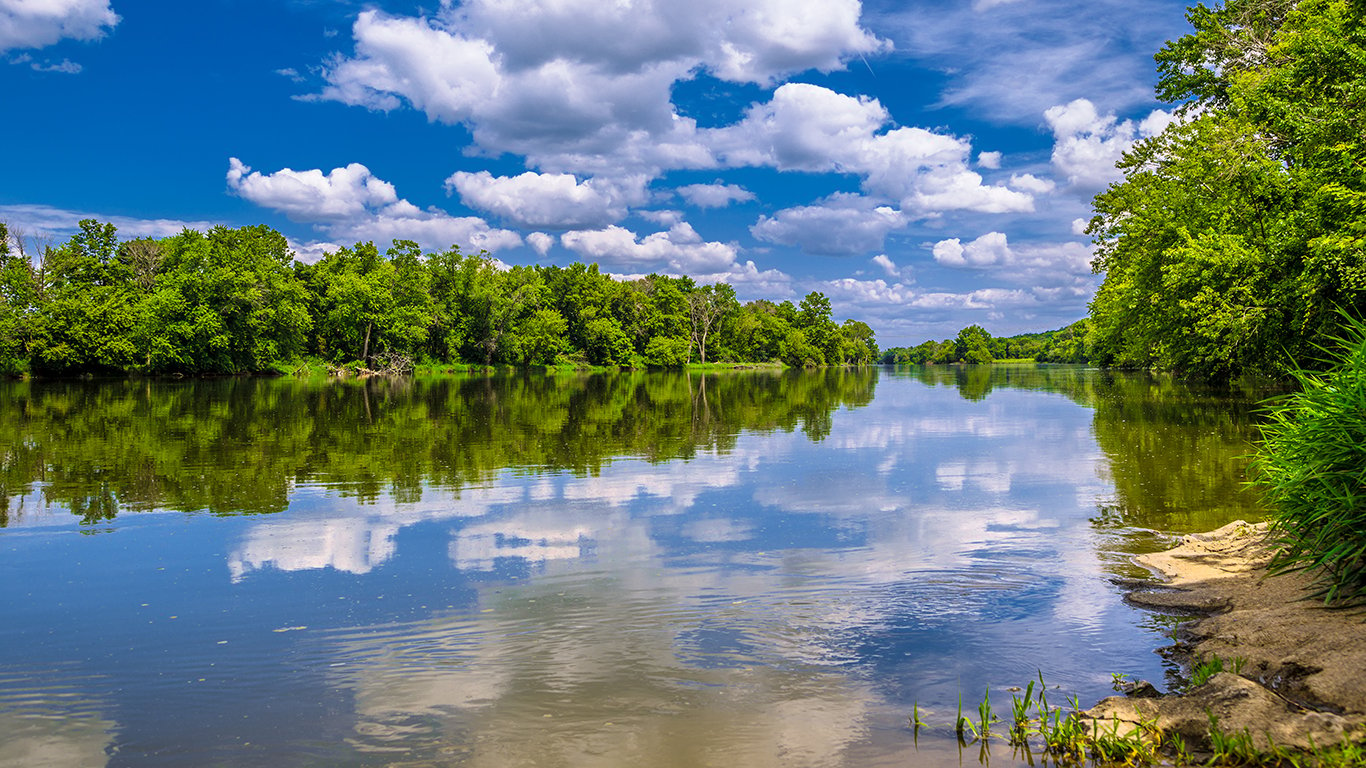
Illinois
> Joined United States: Dec. 3, 1818 (21st state to join)
> Capital: Springfield
> Population: 12,768,320
The Prairie State gets it official name from Native Americans. Illinois comes from “Illiniwek,” which is what the Illini people were called. The name means “best people.” Illinois is the spelling we use for the indigenous people the French explorers encountered in the region in the late 17th century.
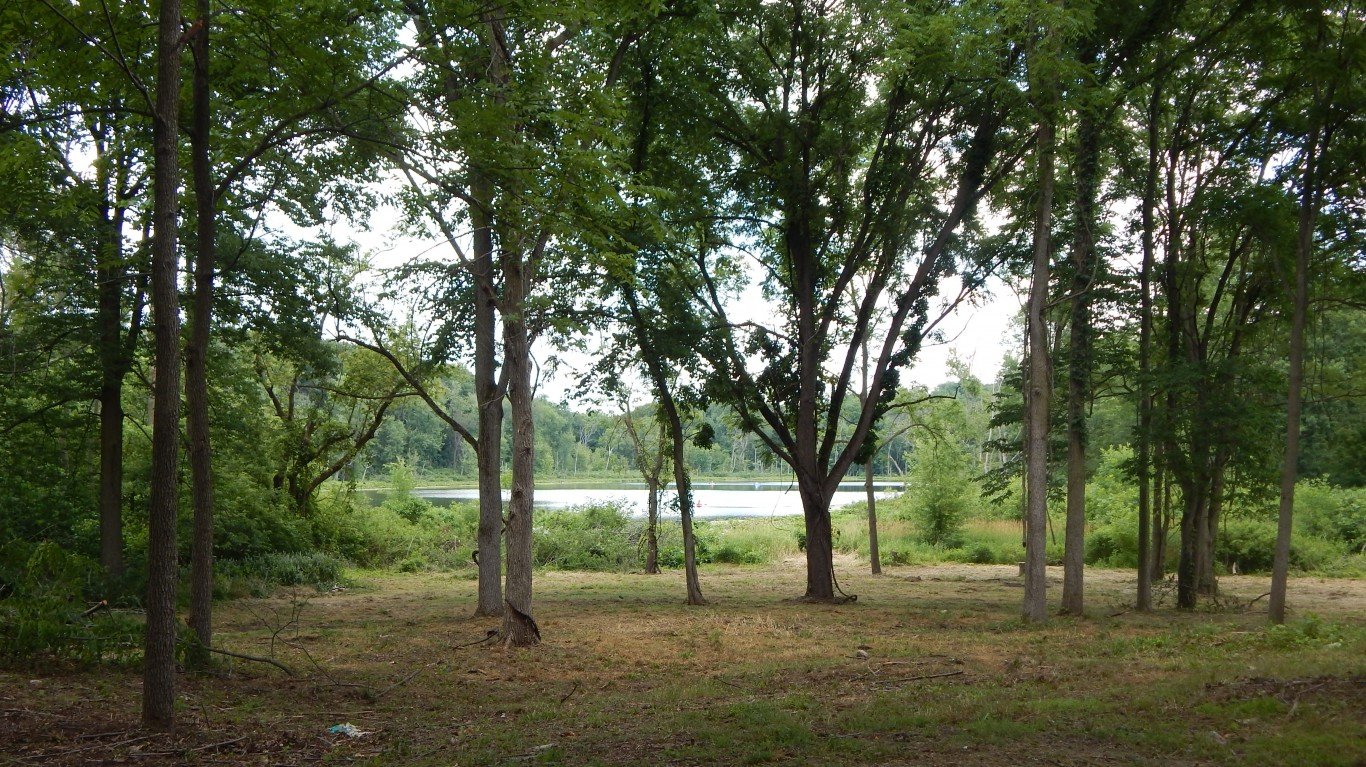
Indiana
> Joined United States: Dec. 11, 1816 (19th state to join)
> Capital: Indianapolis
> Population: 6,782,564
The name “Indiana” means “Land of the Indians” or “Land of Indians.” After the French lost the French and Indian War in 1763, the English took over the territory that would include latter-day Indiana. The new owners of the land sought a new name for the territory, and in recognition of the people who originally occupied it, named it Indiana.
[in-text-ad-2]
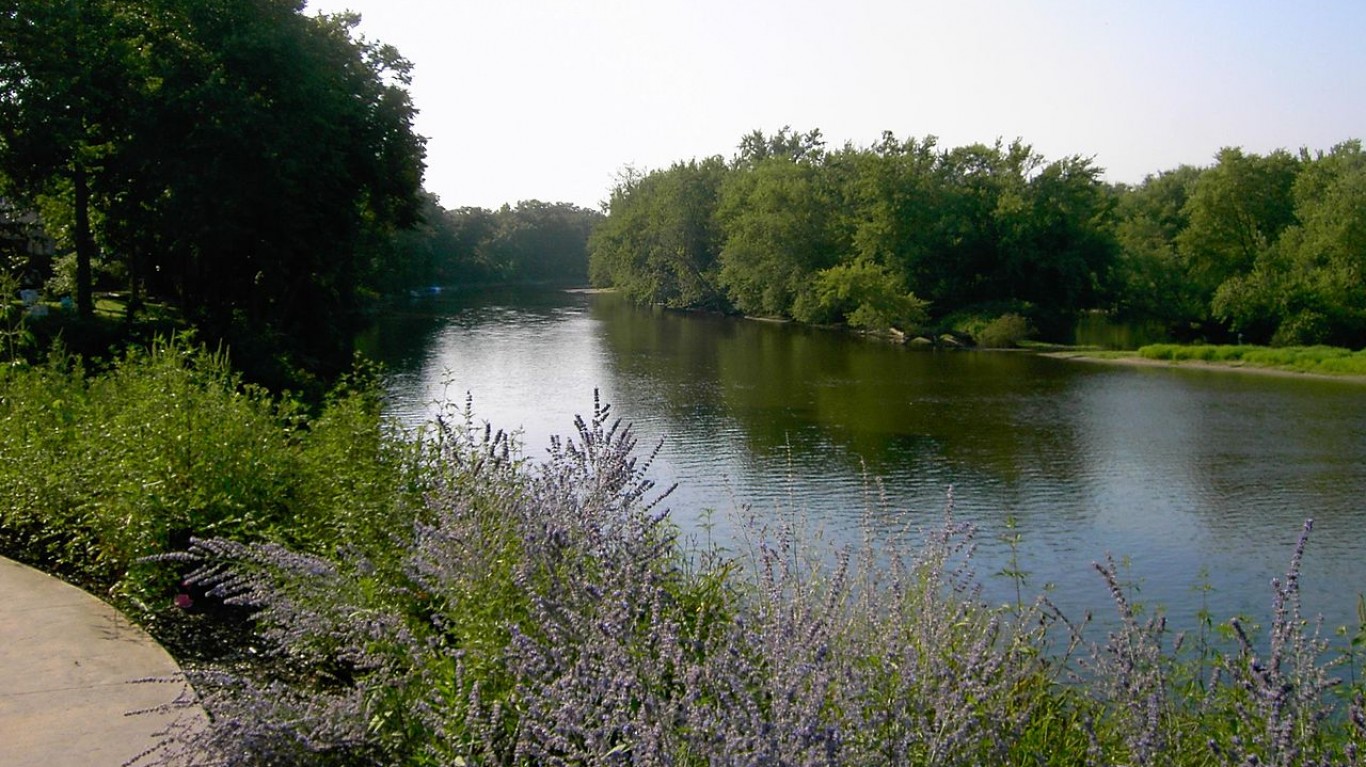
Iowa
> Joined United States: Dec. 28, 1846 (29th state to join)
> Capital: Des Moines
> Population: 3,160,553
The story behind Iowa’s name is a bit complicated. One version claims the name comes from the Iowa river, which was named for the native American Iowas (or Ioways), who were a Sioux tribe. One frontiersman wrote in 1868 that Native Americans encamped by a river were pleased with the location and said in their native tongue “‘Iowa, Iowa, Iowa,” meaning “beautiful.” Members of the Ioway people have a different version of the name. One is the French spelling of Ayuhwa, meaning “sleepy ones.”
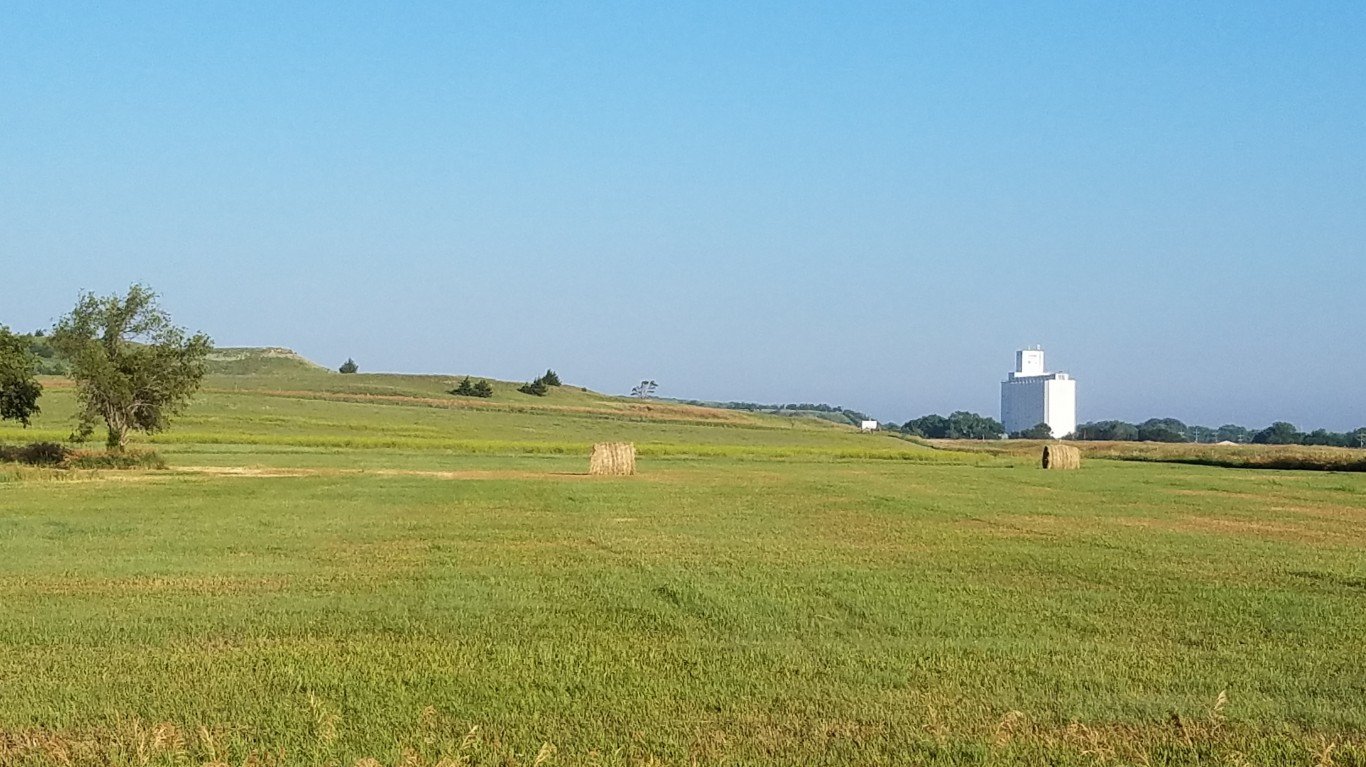
Kansas
> Joined United States: Jan. 29, 1861 (34th state to join)
> Capital: Topeka
> Population: 2,918,515
Kansas gets its name from the Native American Kaws or Kansa people, also a Sioux tribe. They derived the name from the Sioux word for “southwind.” The Kansa people are also referred to as “people of the south wind.”
[in-text-ad]

Kentucky
> Joined United States: June 1, 1792 (15th state to join)
> Capital: Frankfort
> Population: 4,472,265
There are several different theories regarding the name “Kentucky,” though it has a Native American origin. Kentucky comes from the Iroquois word “ken-tah-ten,” which means “land of tomorrow.” The other possible meanings for “Kentucky” that derive from the Iroquois language are: “meadow,” “prairie,” and “the river of blood.”
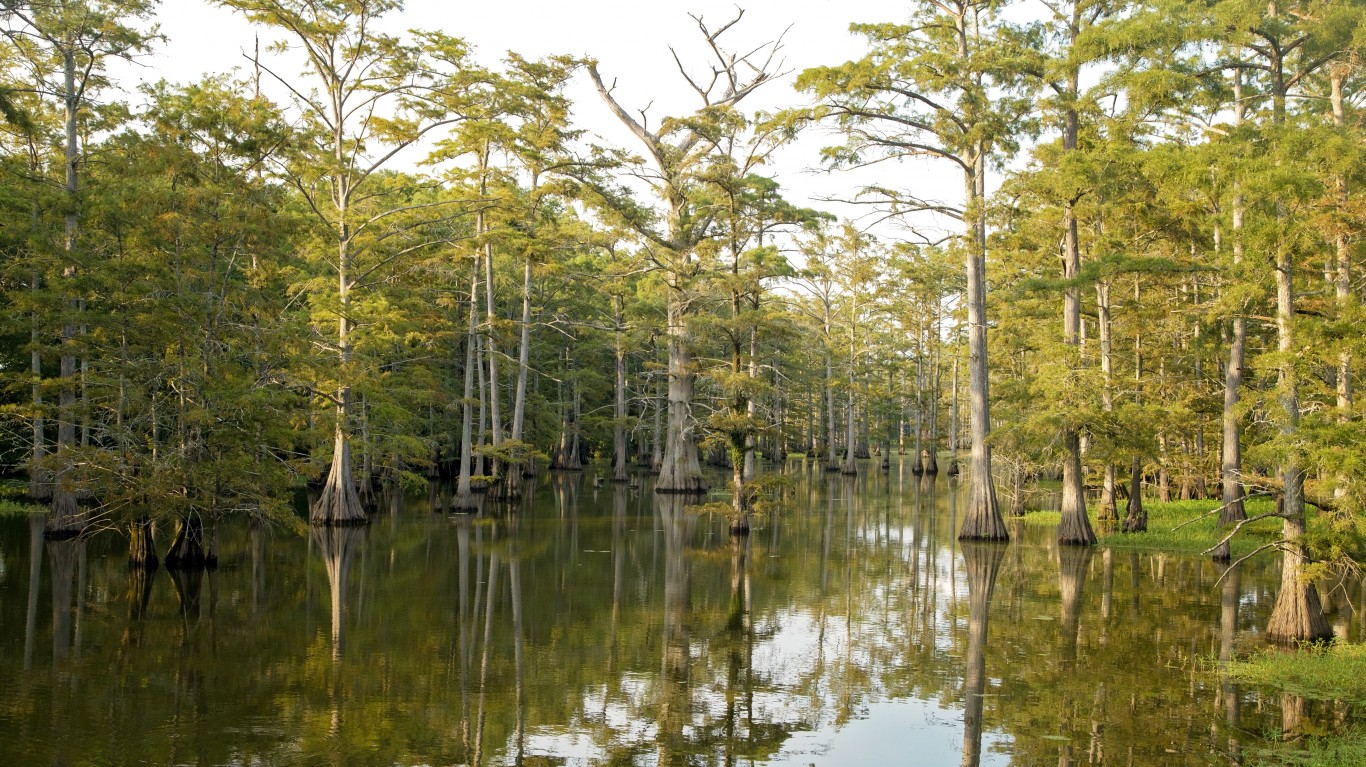
Louisiana
> Joined United States: April 30, 1812 (18th state to join)
> Capital: Baton Rouge
> Population: 4,682,509
There is no disputing the origin of Louisiana’s name. The home of Cajun cooking and jazz music was named in honor of King Louis XIV of France, the Sun King, by explorer René-Robert Cavelier in the mid-1600s.

Maine
> Joined United States: March 15, 1820 (23rd state to join)
> Capital: Augusta
> Population: 1,341,582
Maine’s name might have originated from Royal Navy mariners Ferdinando Gorges and John Mason, who received a charter for what would become Maine and used the name to differentiate the mainland from the islands around it.
[in-text-ad-2]
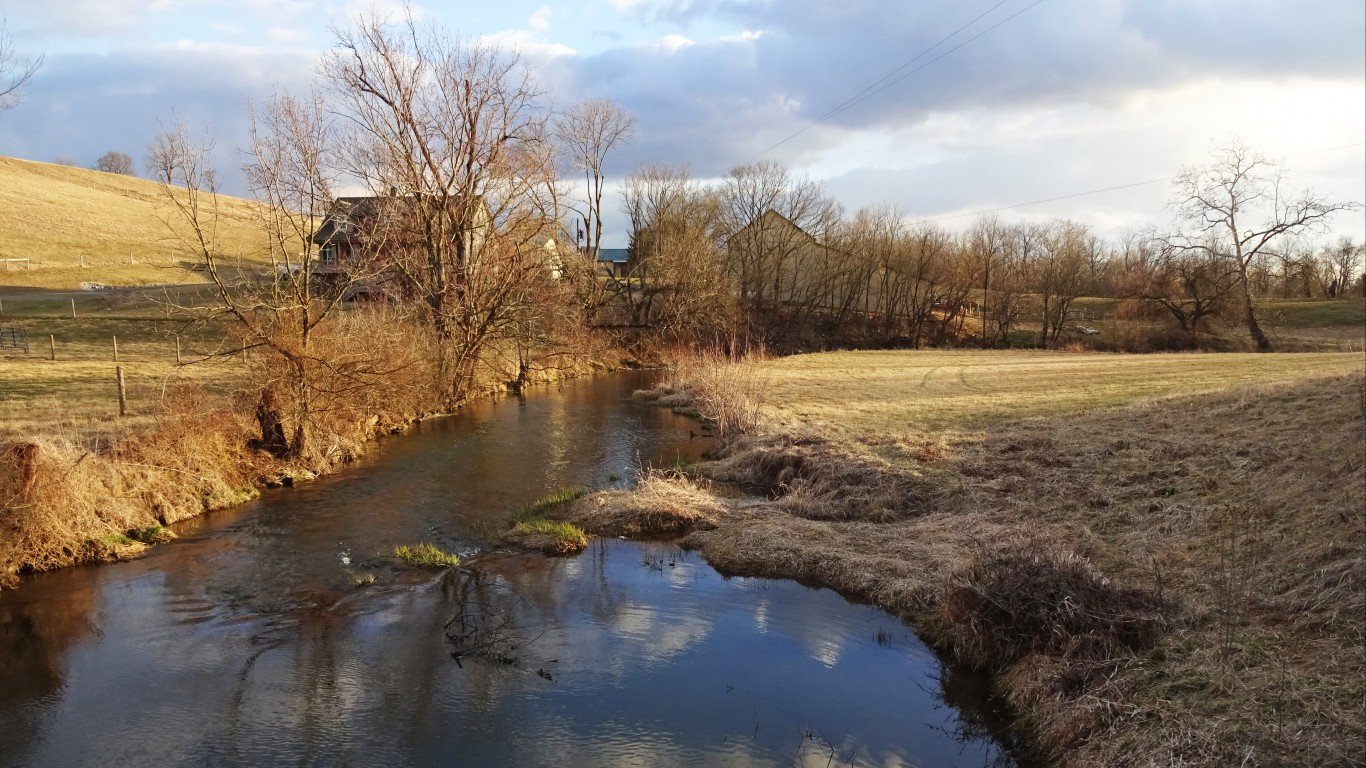
Maryland
> Joined United States: April 28, 1788 (7th state to join)
> Capital: Annapolis
> Population: 6,079,602
The state of Maryland, which as a colony, was founded as a haven for Catholics persecuted in England, was named to honor Queen Henrietta Maria, the Catholic wife of England’s King Charles I.

Massachusetts
> Joined United States: Feb. 6, 1788 (6th state to join)
> Capital: Boston
> Population: 6,895,917
The name “Massachusetts” is derived from the language of the Algonquian nation and translates as “at or about the great hill.” The hill refers to the Blue Hills southwest of Boston.
[in-text-ad]
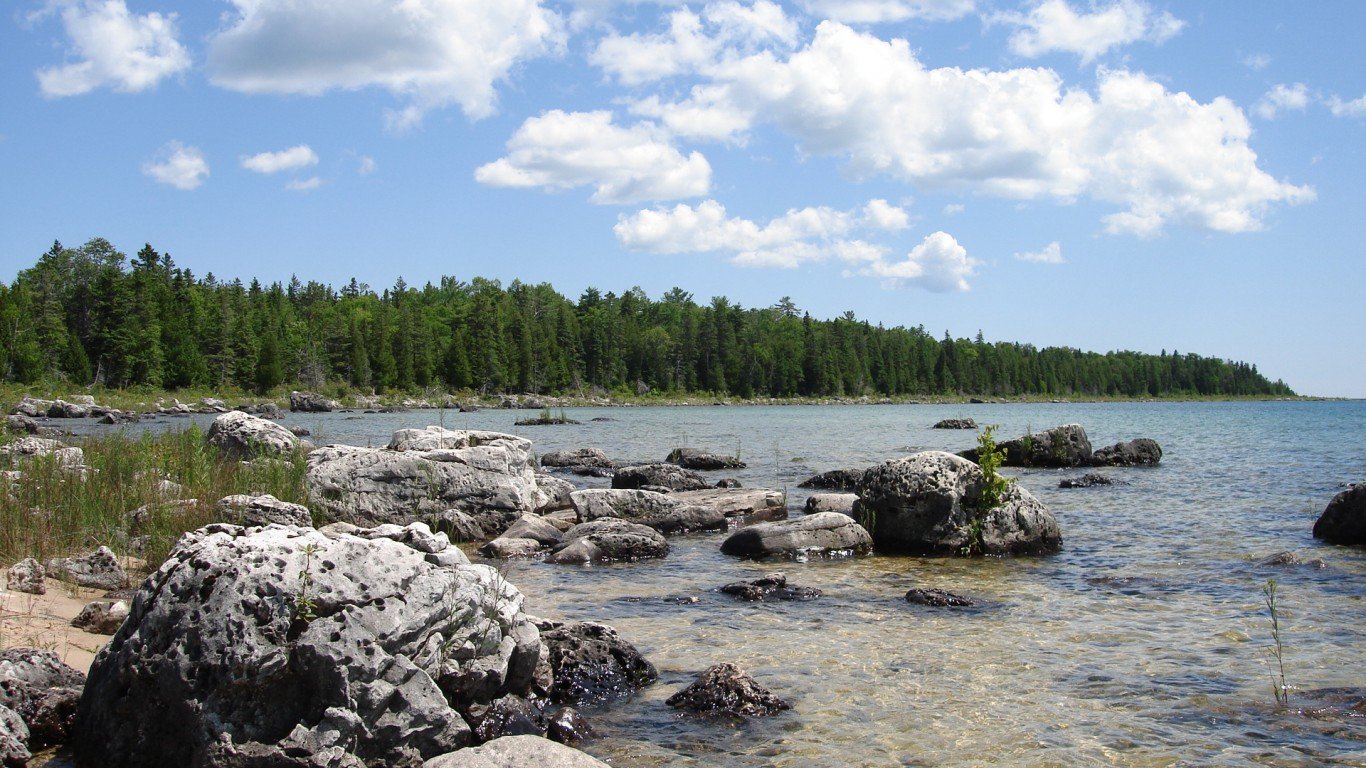
Michigan
> Joined United States: Jan. 26, 1837 (26th state to join)
> Capital: Lansing
> Population: 10,390,149
One account maintain the Michigan name is based on a Native American Chippewa word, “meicigama,” meaning “great water.” Another version of the name claims the state gets its name from Lake Michigan and that Michigan is a French conversion of the Ojibwa word misshikama, which means “big lake,” “large lake,” or “large water.”
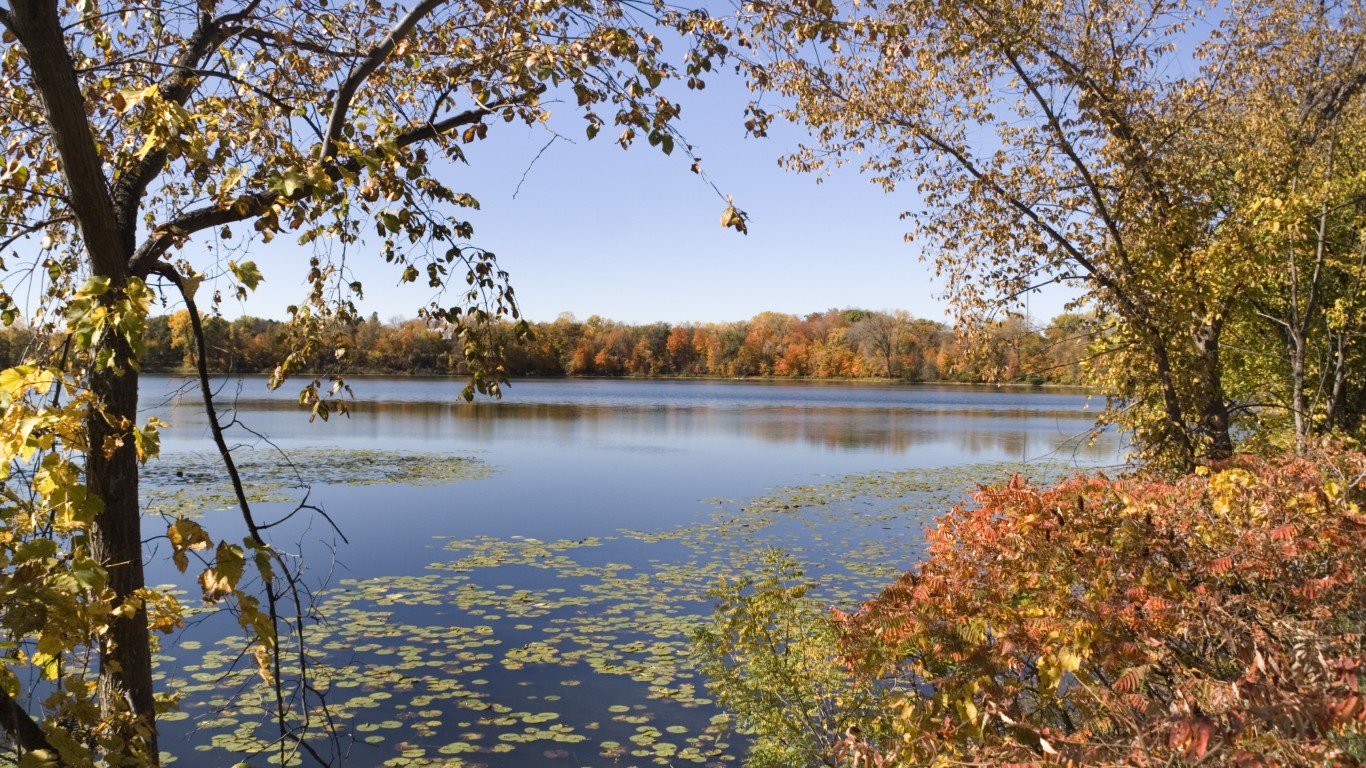
Minnesota
> Joined United States: May 11, 1858 (32nd state to join)
> Capital: St. Paul
> Population: 5,628,162
As we move west, many of the state names are derived from Native American place names or language. Minnesota is one of them. The name “Minnesota” comes from the Dakota Sioux word “Mnisota,” the Native American name for the Minnesota River, which means “cloudy water” or “sky-tinted water.”
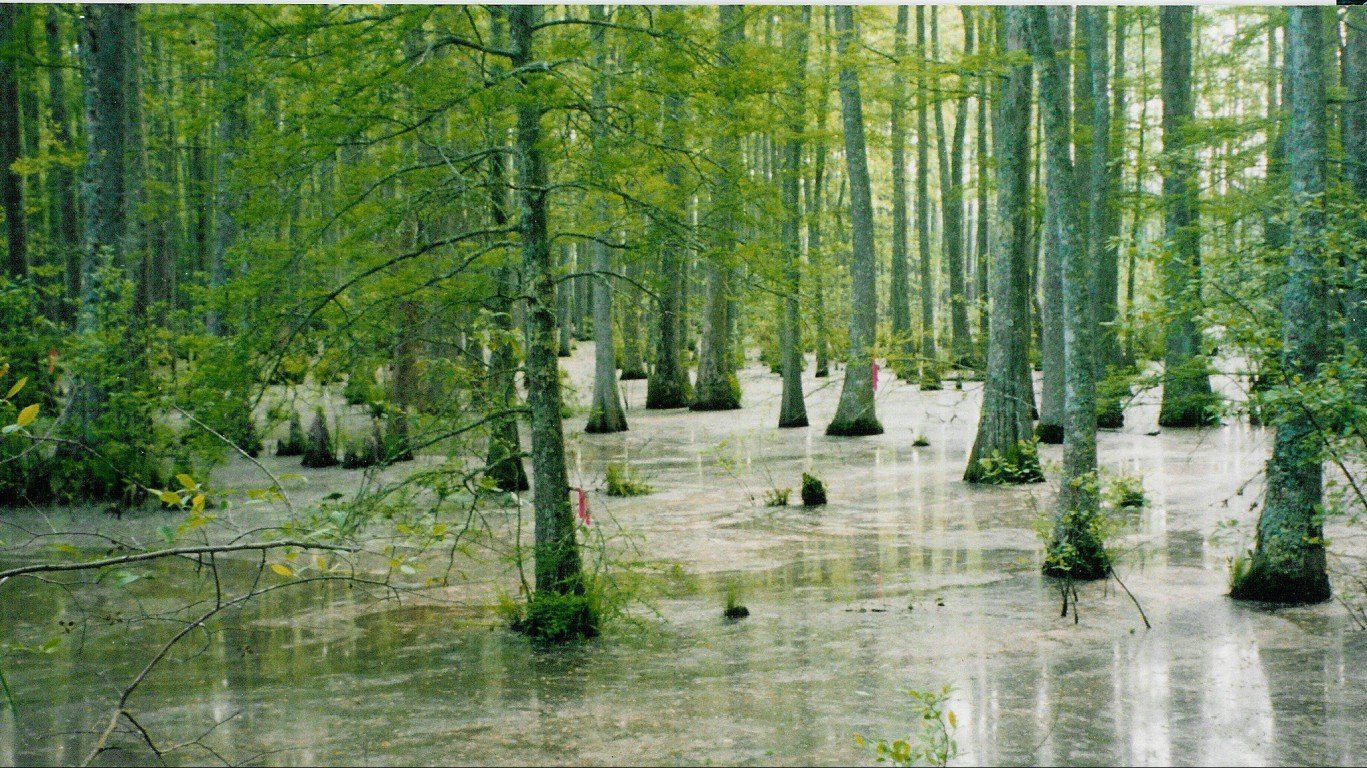
Mississippi
> Joined United States: Dec. 10, 1817 (20th state to join)
> Capital: Jackson
> Population: 2,982,785
The name “Mississippi” comes from the word “Messipi” – the French version for either the Ojibwe or Algonquin name for the river, “Misi-ziibi,” meaning “great river.”
[in-text-ad-2]
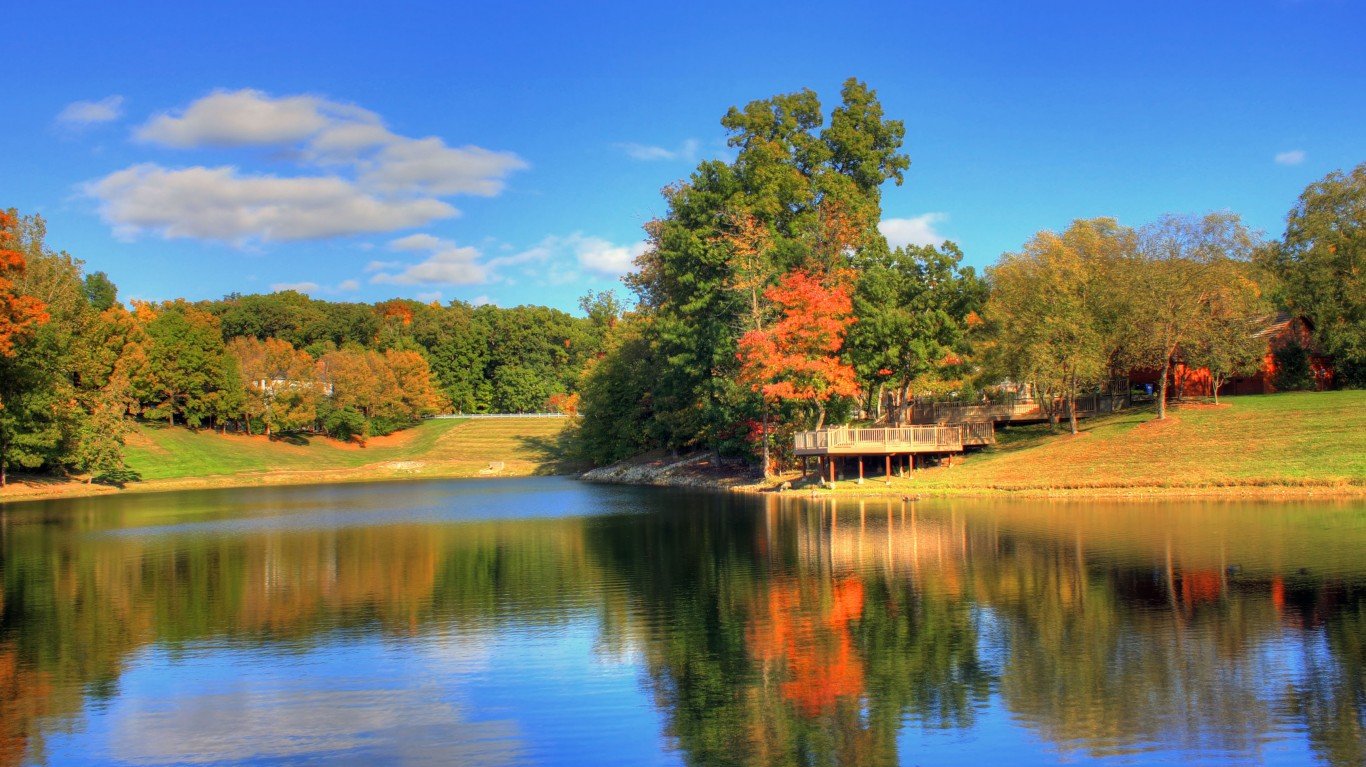
Missouri
> Joined United States: Aug. 10, 1821 (24th state to join)
> Capital: Jefferson City
> Population: 6,135,888
The name Missouri originates from the Native American Sioux of the state called the Missouris. Missouri means “town of the large canoe.” Other meanings for “Missouri” include “those who have dugout canoes,” “wooden canoe people,” or “he of the big canoe.”
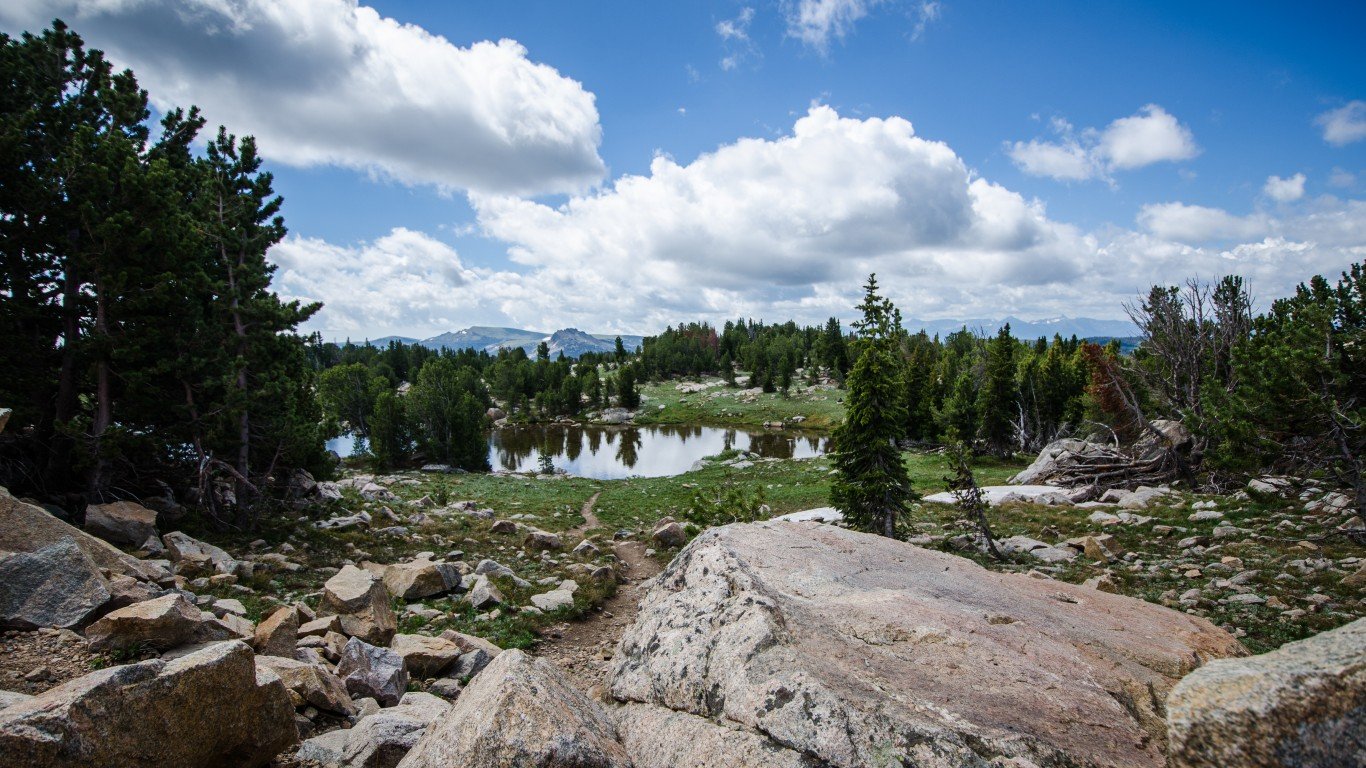
Montana
> Joined United States: Nov. 8, 1889 (41st state to join)
> Capital: Helena
> Population: 1,062,330
The name “Montana” is based on the Spanish word for mountain, montaña, though it is not known who first used the name for the territory. The name “Montana” was proposed in 1864 when the area was separated from the Nebraska Territory.
[in-text-ad]
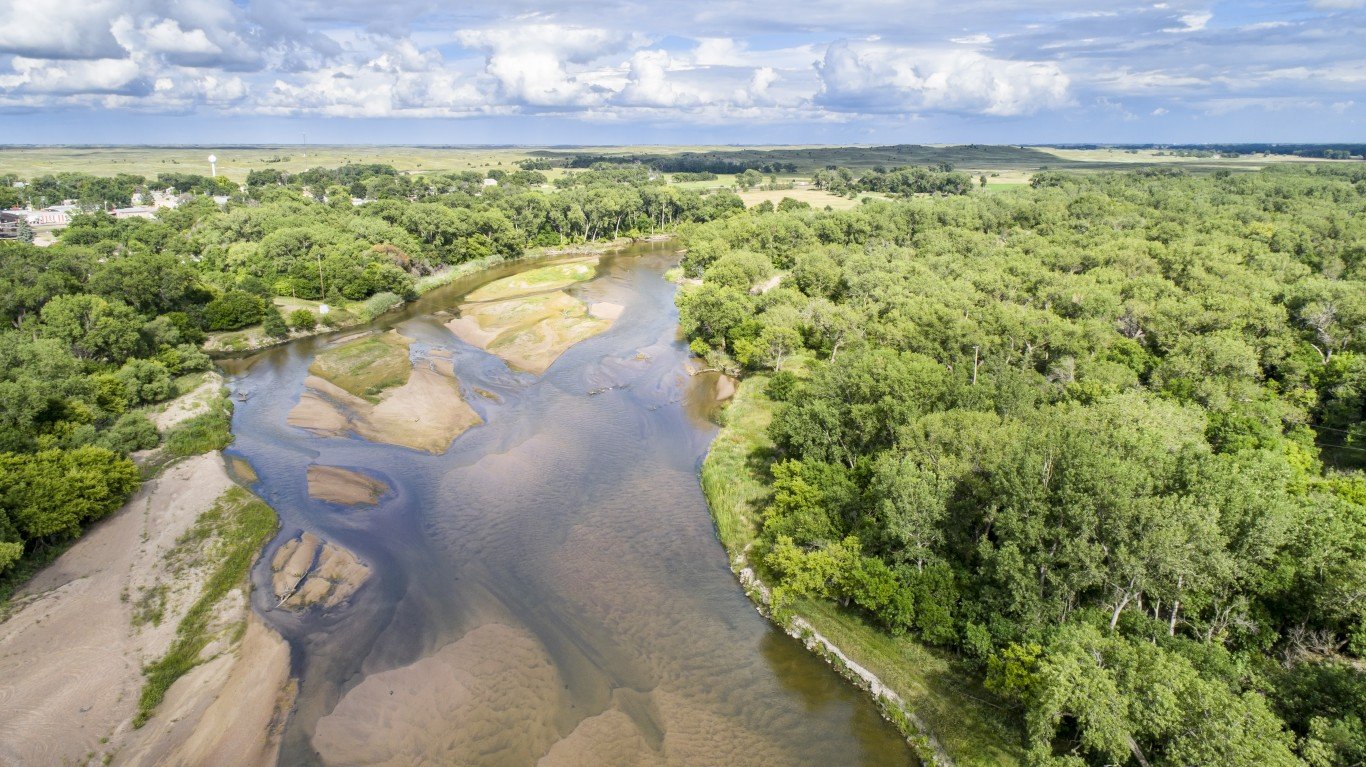
Nebraska
> Joined United States: March 1, 1867 (37th state to join)
> Capital: Lincoln
> Population: 1,932,549
The Cornhusker State’s name is based on an Otoe Indian word “Nebrathka,” meaning “flat water,” which refers to the Platte River, a symbol of Nebraska.

Nevada
> Joined United States: Oct. 31, 1864 (36th state to join)
> Capital: Carson City
> Population: 3,056,824
The Spanish influence is evident in Nevada, whose name is derived from the Spanish phrase “Sierra Nevada,” meaning snow-covered mountain range. “Nevada” is Spanish for “covered in snow” or “snow-capped.”

New Hampshire
> Joined United States: June 21, 1788 (9th state to join)
> Capital: Concord
> Population: 1,350,575
New Hampshire was named by Captain John Mason after Hampshire, England, where Mason had lived as a child. Mason received a land grant for what would become New Hampshire in 1629.
[in-text-ad-2]
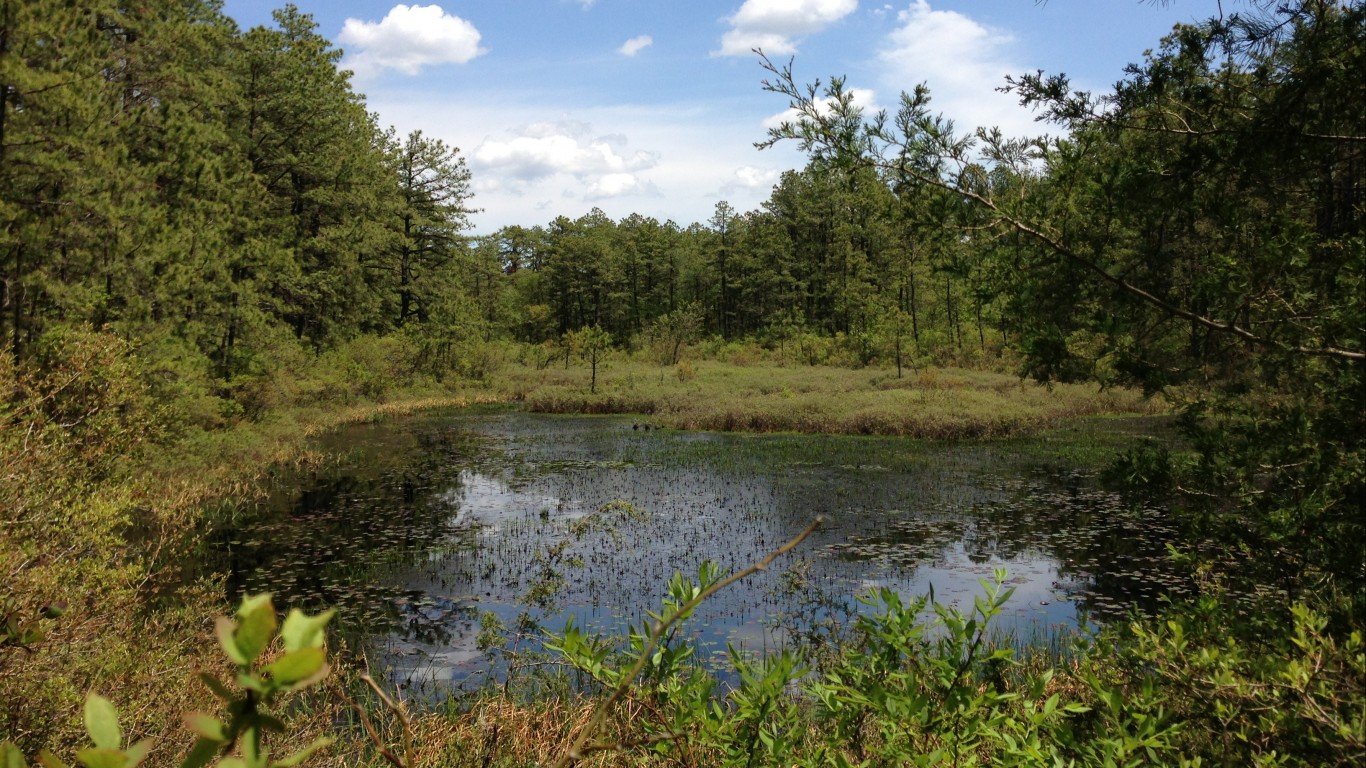
New Jersey
> Joined United States: Dec. 18, 1787 (3rd state to join)
> Capital: Trenton
> Population: 9,032,872
New Jersey, the third state to the join the Union, was named for the island of Jersey in the English Channel in honor of Sir George Carteret, one of the two men to whom the land that would become New Jersey was originally given. The city of Carteret in central New Jersey is named after Sir George Carteret.
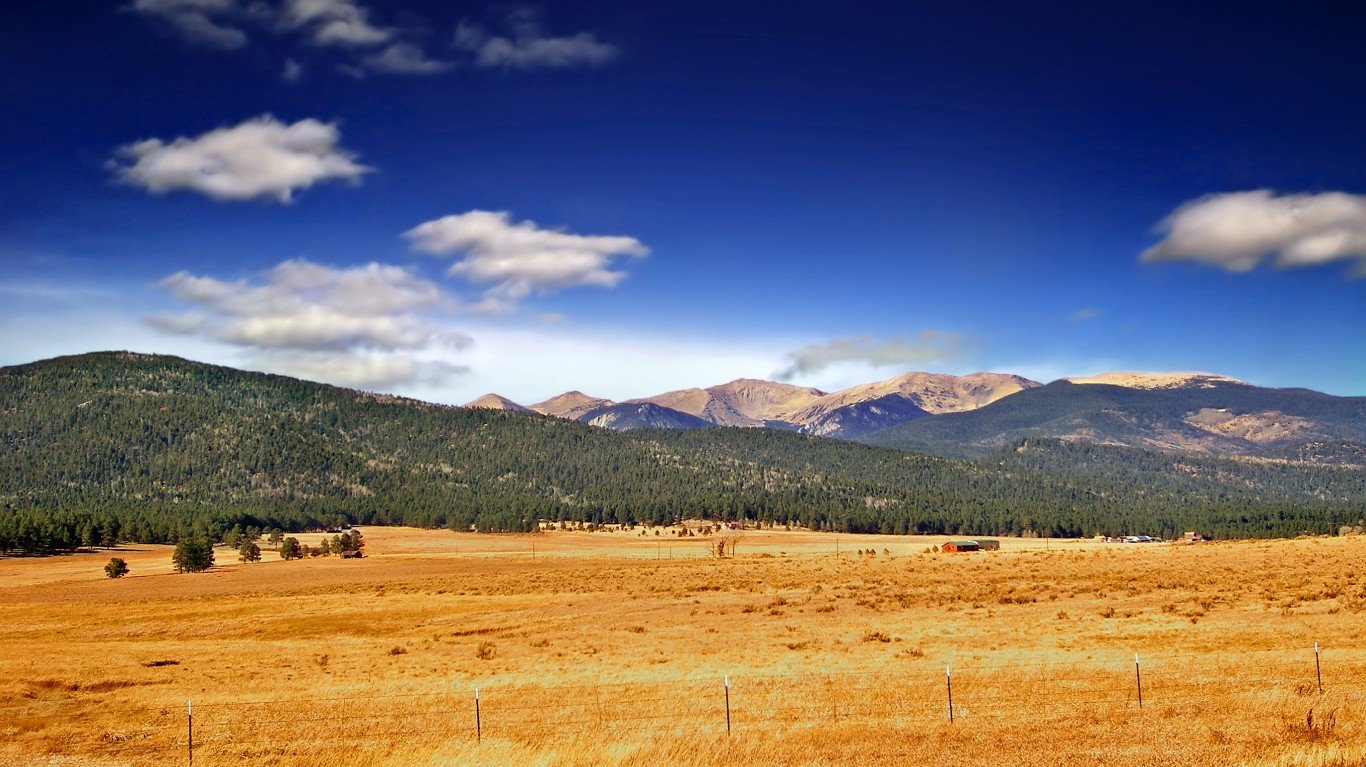
New Mexico
> Joined United States: Jan. 6, 1912 (47th state to join)
> Capital: Santa Fe
> Population: 2,090,708
The origin of the world “Mexico” is from the Aztec word meaning “place of Mexitli,” which is an Aztec god. Other possible origins include a combination of m?tztli (“moon”), xictli (“center”) and the suffix -co (“place”) and means “place at the center of the moon.” The Spanish named the lands north of the Rio Grande “Nuevo Mexico,” or New Mexico. The name was anglicized after the area was turned over to the U.S. by Mexico after the Mexican-American War ended in 1848.
[in-text-ad]

New York
> Joined United States: July 26, 1788 (11th state to join)
> Capital: Albany
> Population: 19,862,512
The Empire State was named after the Duke of York and Albany, the brother of King Charles II, in 1664. There had been a settlement called York is in England since before the Romans invaded England. The word York comes from the Latin word for city.

North Carolina
> Joined United States: Nov. 21, 1789 (12th state to join)
> Capital: Raleigh
> Population: 10,390,149
No mystery as to how the Tar Heel State got its name. Carolina, derived from the Latin word for Charles (Carolus), was named by King Charles II of England to honor his father, King Charles I in the 17th century. Carolina would eventually be divided into two colonies, North and South Carolina, in 1712.
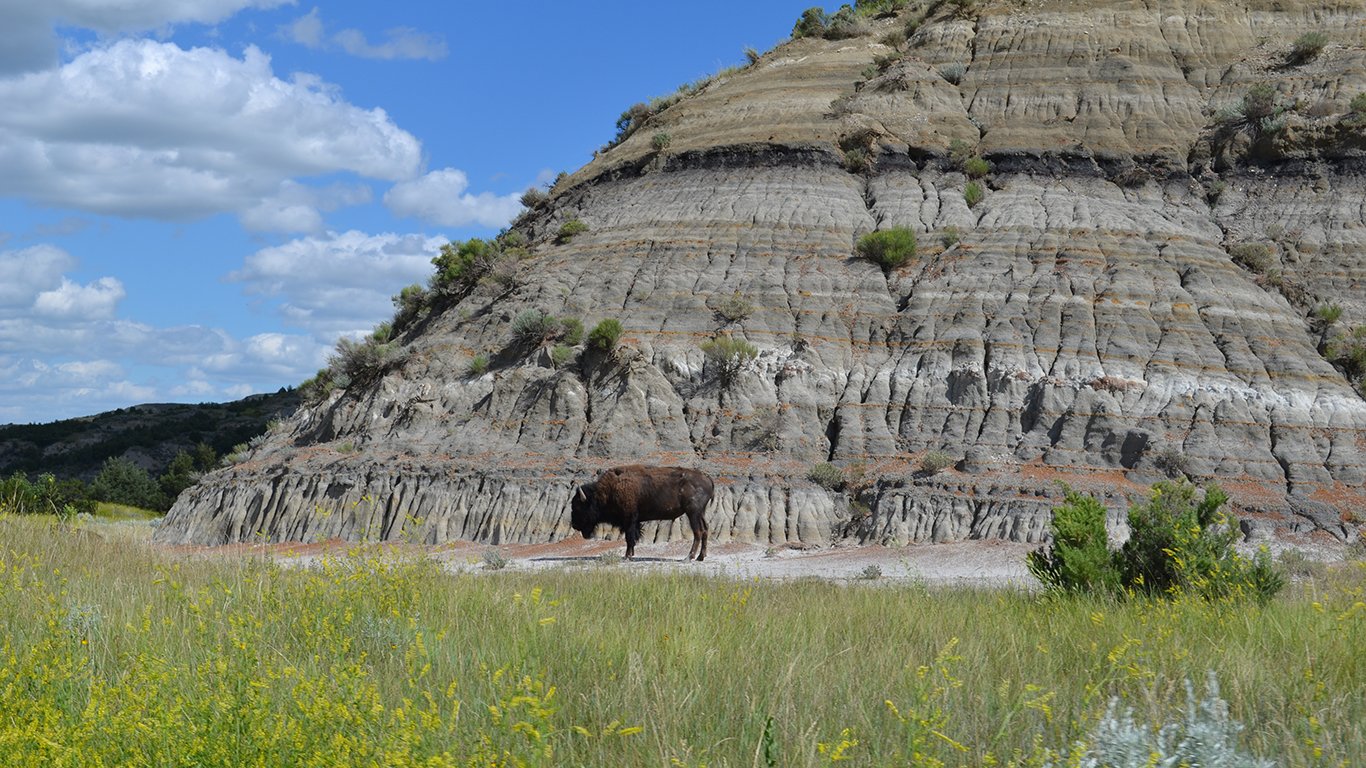
North Dakota
> Joined United States: Nov. 2, 1889 (39th state to join)
> Capital: Bismarck
> Population: 755,238
Both North and South Dakota get their name from the Sioux word for “friend” or “ally,” though there is no definitive detail for this origin.
Both North and South Dakota get their name from the Sioux word for “friend” or “ally,” though there is no definitive detail for this origin.
[in-text-ad-2]

Ohio
> Joined United States: March 1, 1803 (17th state to join)
> Capital: Columbus
> Population: 11,694,664
There are several Native American name possibilities for Ohio. One suggests that the name “Ohio” originates from the Iroquois word for “good river.” Other origins claim “Ohio” might have come from the Wyandot people’s word meaning “large/great” or “the great one” or it was derived from the Seneca word “ohi:yo'” meaning “large creek”.

Oklahoma
> Joined United States: Nov. 16, 1907 (46th state to join)
> Capital: Oklahoma City
> Population: 3,940,521
The Sooner State’s name comes from the Choctaw people’s words “okla humma,” which roughly means “red people” or “red persons.”
[in-text-ad]
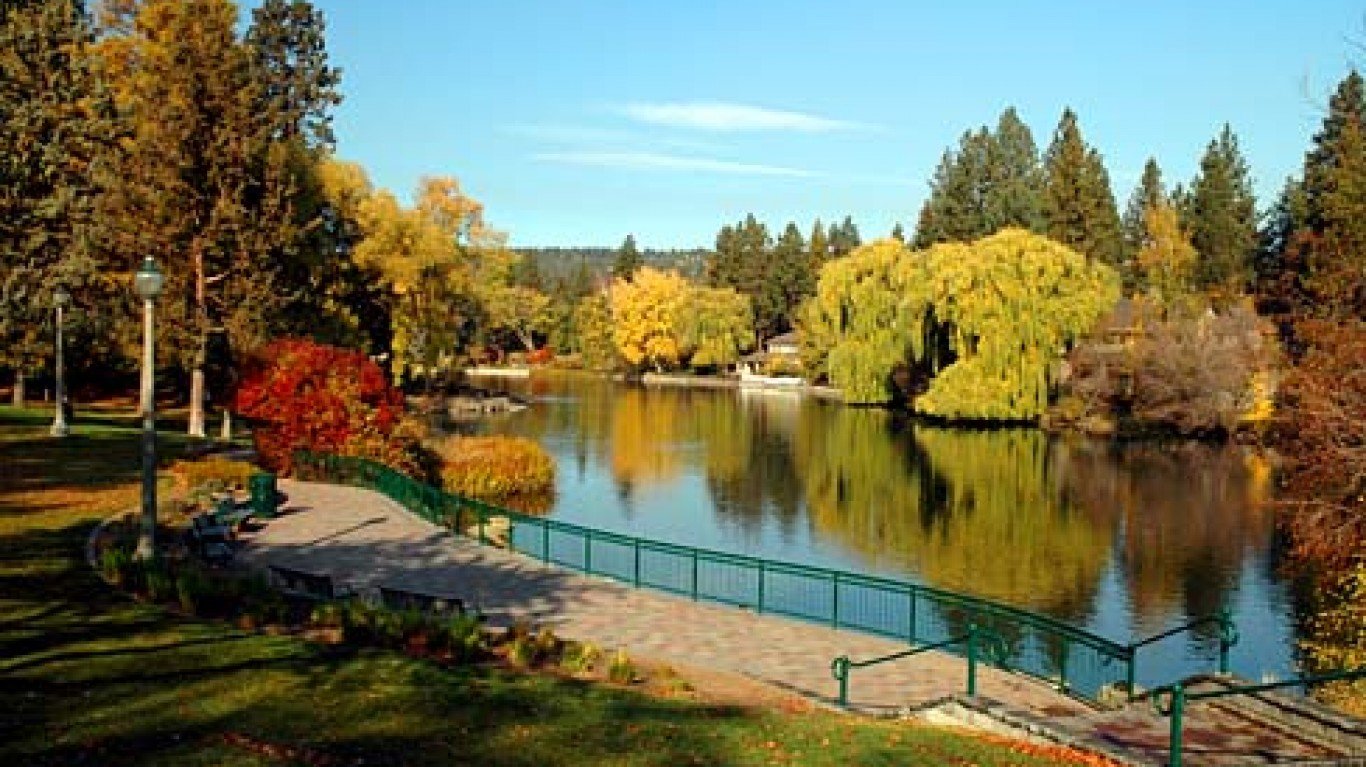
Oregon
> Joined United States: Feb. 14, 1859 (33rd state to join)
> Capital: Salem
> Population: 4,199,563
The origin of the state name is up for debate with a number of possible origins. The name “Oregon” might have been derived from a 1715 French map that references the Wisconsin River as “Ouaricon-sint.” Another possibility is that the name “Oregon” stems from an English army officer’s reference in the late 18th century to “the River called by the Indians Ouragon.” Still another possibility is that the name comes from the French word “ouragan,” meaning “hurricane,” because French explorers called the Columbia River “Le Fleuve aux Ouragans,” or “Hurricane River,” because of the strong winds gusting out of the Columbia Gorge.
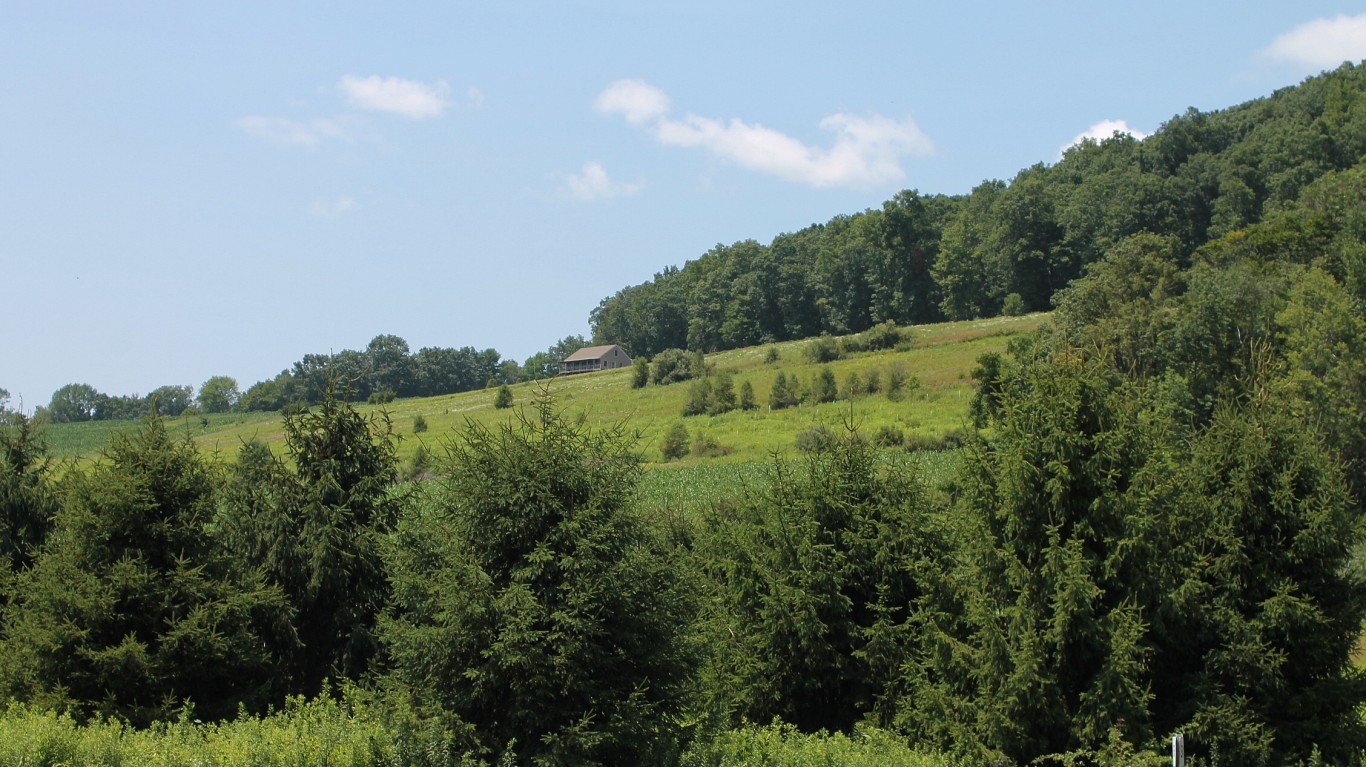
Pennsylvania
> Joined United States: Dec. 12, 1787 (2nd state to join)
> Capital: Harrisburg
> Population: 12,823,989
If you remember your high school Latin, then it’s easy to deconstruct the name “Pennsylvania, meaning “Penn’s woods” or “Penn’s land.” The state was name William Penn, who was granted the land by King Charles II of England in 1681. The “sylvania” suffix is derived from the Latin word for forest, which is sylva.
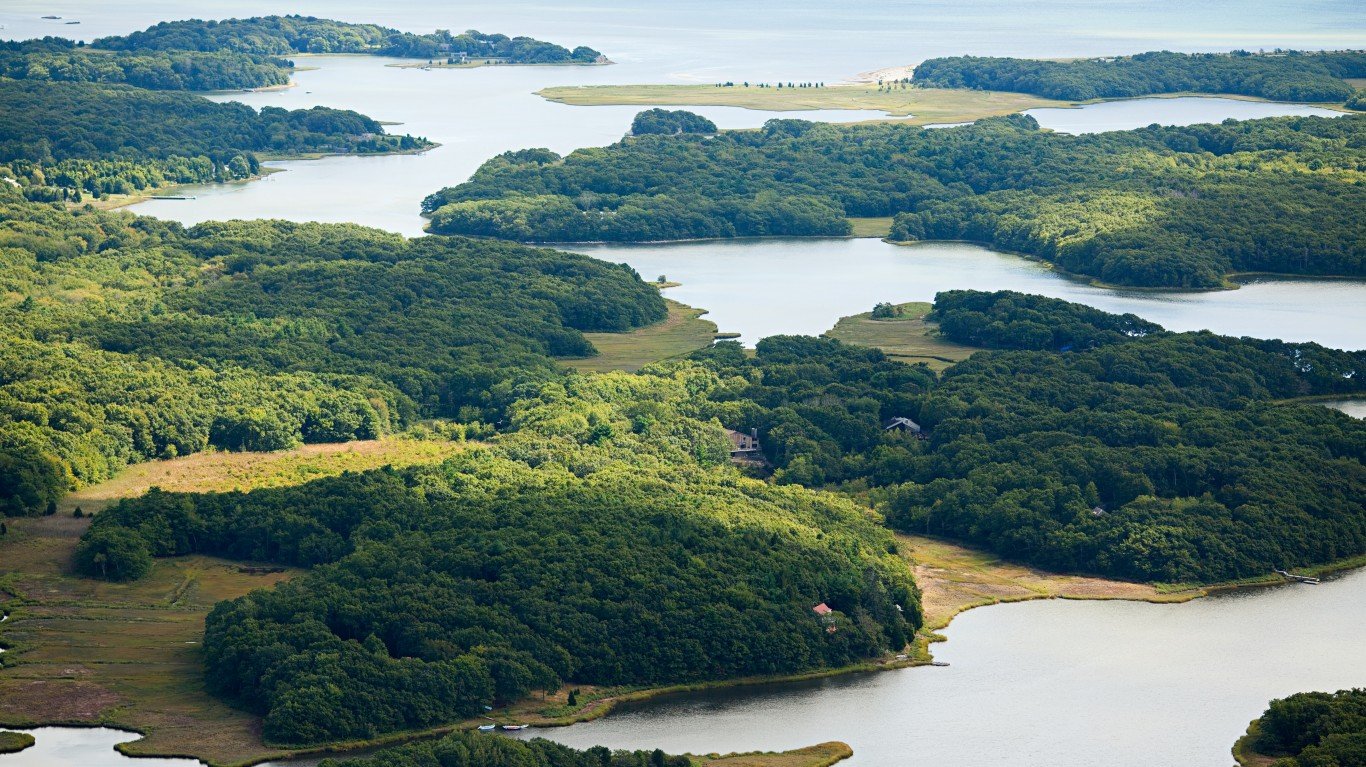
Rhode Island
> Joined United States: May 29, 1790 (13th state to join)
> Capital: Providence
> Population: 1,061,712
The origin of Rhode Island’s name harks back to the Old World. The first mention of Rhode Island in writing was by Italian explorer Giovanni da Verrazzano in the early 16th century. He referred to an island near the mouth of Narragansett Bay that he compared to the Island of Rhodes in the Mediterranean. Still, others connect the name to 17th century Dutch explorer Adriaen Block, who called it “Roodt Eylandt,” meaning “red island” because of its red clay.
[in-text-ad-2]
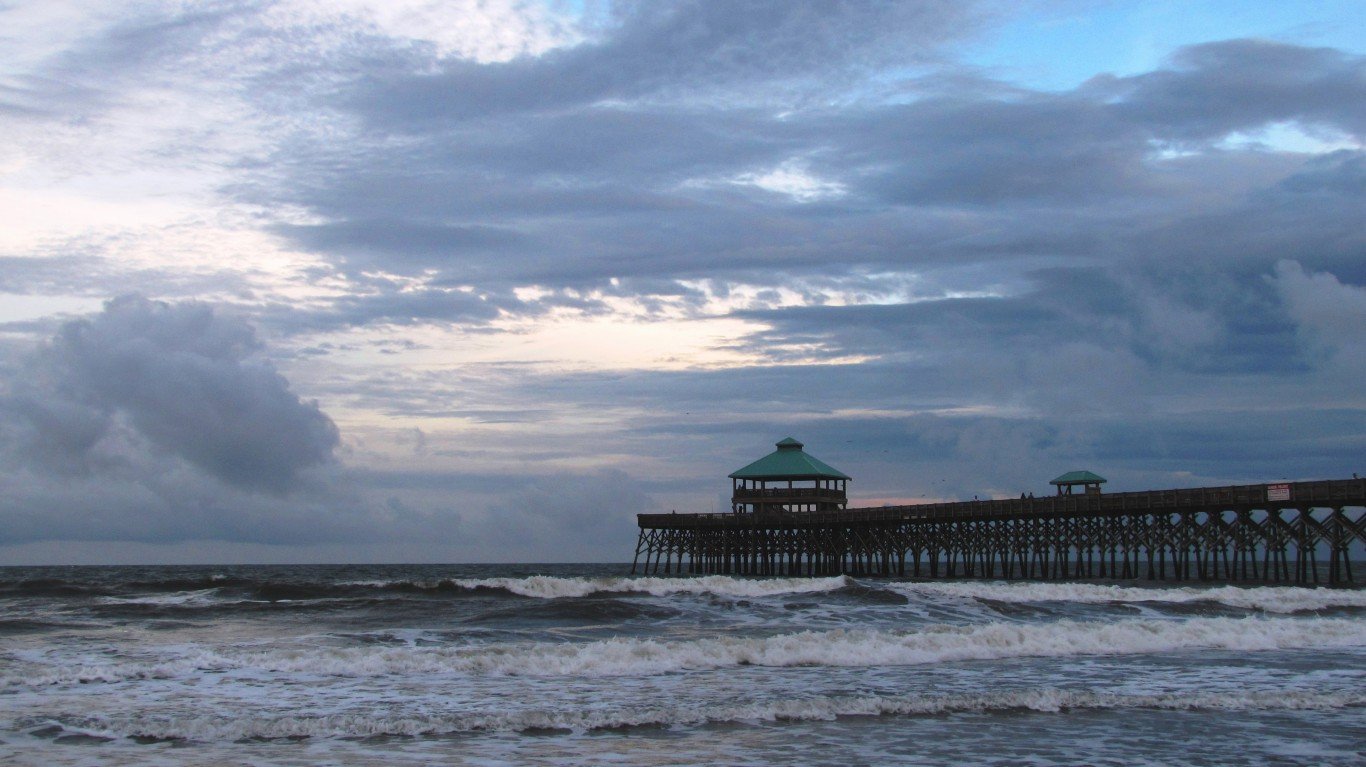
South Carolina
> Joined United States: May 23, 1788 (8th state to join)
> Capital: Columbia
> Population: 5,088,916
Carolina, derived from the Latin word for Charles (Carolus), was named by King Charles II of England to honor his father, King Charles I in the 17th century. Carolina would eventually be divided into two colonies, North and South Carolina, in 1712.

South Dakota
> Joined United States: Nov. 2, 1889 (40th state to join)
> Capital: Pierre
> Population: 877,790
Both North and South Dakota get their name from the Sioux word for “friend” or “ally,” though there is no definitive proof for this origin.
[in-text-ad]

Tennessee
> Joined United States: June 1, 1796 (16th state to join)
> Capital: Nashville
> Population: 6,782,564
The name “Tennessee” may have come from Creek and Cherokee words, but it is uncertain where the Volunteer State got its name. Spanish explorer Juan Pardo first recorded the name in 1567 as he and his soldiers passed through a Cherokee village called “Tanasqui.”
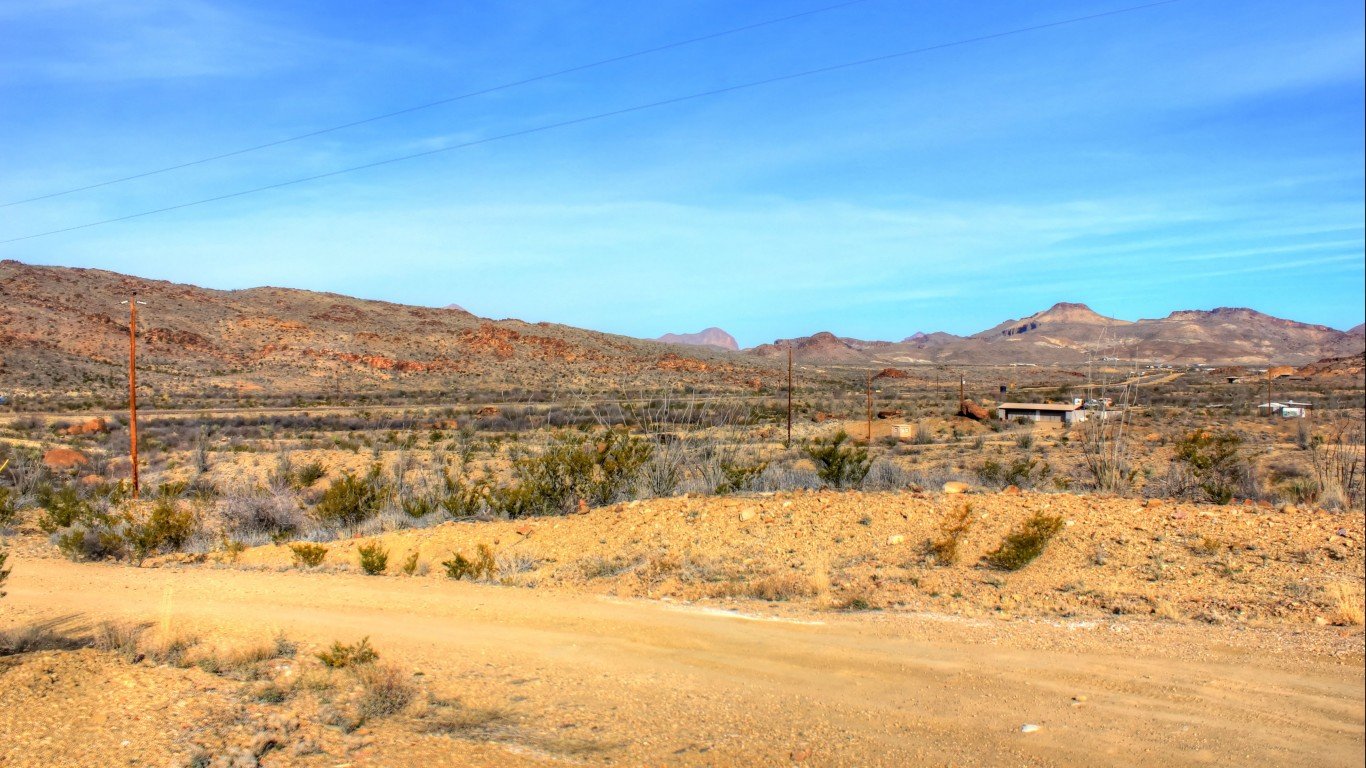
Texas
> Joined United States: Dec. 29, 1845 (28th state to join)
> Capital: Austin
> Population: 28,704,330
“Texas” comes from the Native American Caddo word “teyshas,” which means “friends” or “allies.” Some Native American people like the Caddo or the Hasinais used the word as a greeting. In time, the word came to refer to the area north of the Rio Grande and east of New Mexico.

Utah
> Joined United States: Jan. 4, 1896 (45th state to join)
> Capital: Salt Lake City
> Population: 3,159,345
Utah owes its origin to an Apache Indian word, “yuttahih,” that means “people of the mountains” or “they who are higher up.” In the Native American people’s language, the word “ute” means “land of the sun.”
[in-text-ad-2]

Vermont
> Joined United States: March 4, 1791 (14th state to join)
> Capital: Montpelier
> Population: 623,960
French explorer Samuel de Champlain called the stunning Green Mountains of Vermont “Verd Mont,” which is French for “green mountain.”
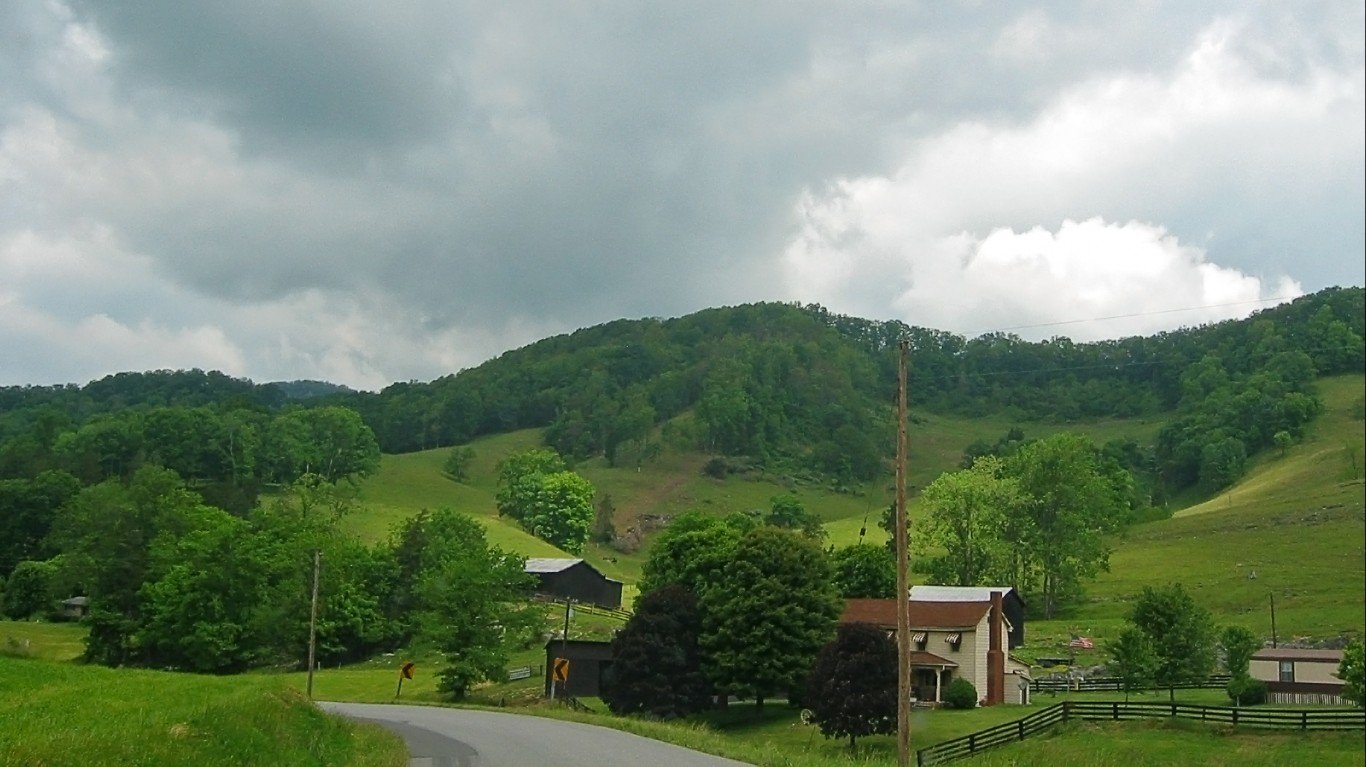
Virginia
> Joined United States: June 25, 1788 (10th state to join)
> Capital: Richmond
> Population: 8,525,660
The state of Virginia was named after England’s Queen Elizabeth I, who was also known as “The Virgin Queen.” The lands in North America claimed by England in the 1600s were called “Virginia.” Queen Elizabeth I granted Walter Raleigh the charter to create a colony.
[in-text-ad]

Washington
> Joined United States: Nov. 11, 1889 (42nd state to join)
> Capital: Olympia
> Population: 7,530,552
The state of Washington was named in honor of George Washington and is the only state named after the the nation’s first president.

West Virginia
> Joined United States: June 20, 1863 (35th state to join)
> Capital: Charleston
> Population: 1,803,077
West Virginia split from Virginia when the 39 western counties of Virginia refused to secede from the Union during the Civil War. West Virginia came into being in 1863. For Virginia’s name origin please look up Virginia on our list.

Wisconsin
> Joined United States: May 29, 1848 (30th state to join)
> Capital: Madison
> Population: 5,818,049
The Wisconsin Historical Society says Wisconsin was originally called “Meskonsing” and is the English rendering of a French version of a Miami Indian name for the Wisconsin River that runs through the center of the state. The society said that in the Miami people’s language it meant, “this stream meanders through something red,” a reference to the red sandstone bluffs of the Wisconsin Dells.
[in-text-ad-2]
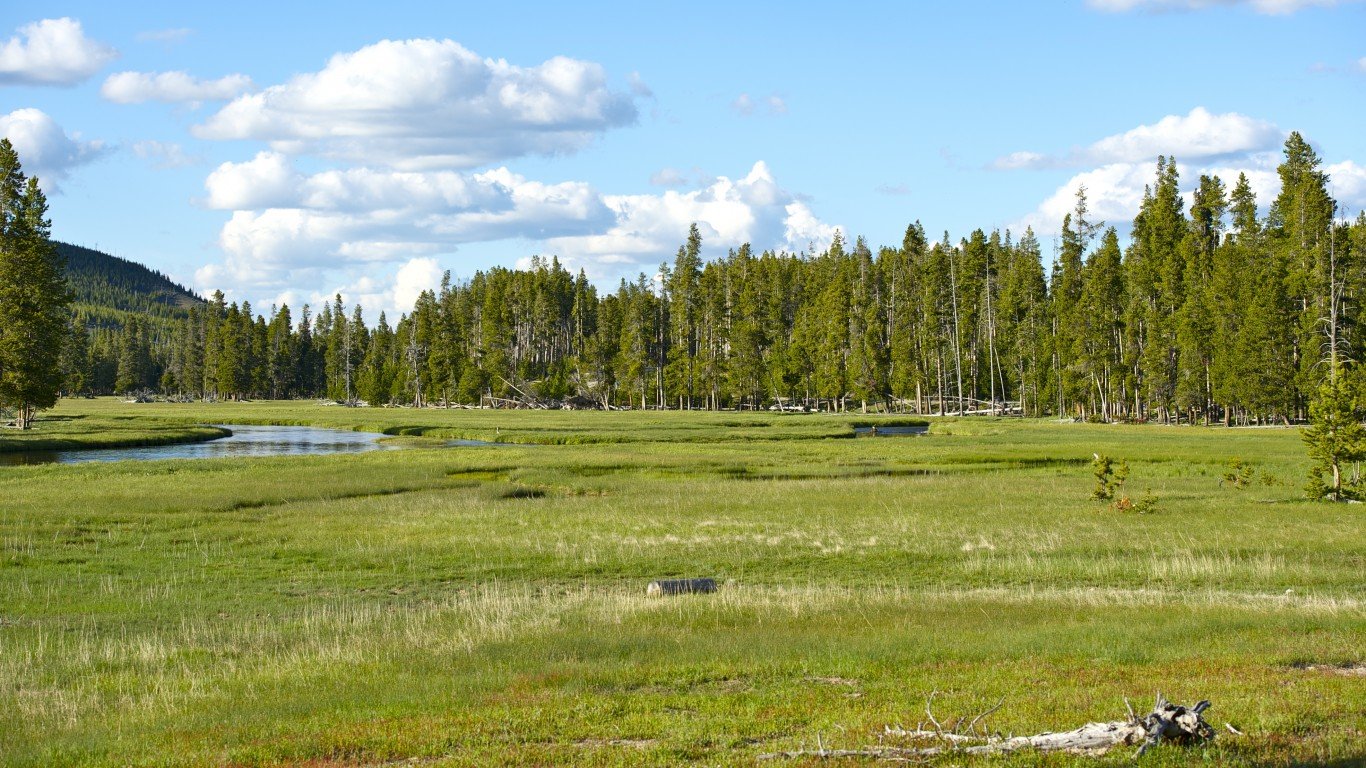
Wyoming
> Joined United States: July 10, 1890 (44th state to join)
> Capital: Cheyenne
> Population: 573,720
The name “Wyoming” is derived from the Delaware people’s word “mecheweami-ing,” meaning “at the big plains.” Another possible origin for Wyoming’s name is that it is an Algonquin word meaning “large prairie place.”
Sponsored: Find a Qualified Financial Advisor
Finding a qualified financial advisor doesn’t have to be hard. SmartAsset’s free tool matches you with up to 3 fiduciary financial advisors in your area in 5 minutes. Each advisor has been vetted by SmartAsset and is held to a fiduciary standard to act in your best interests. If you’re ready to be matched with local advisors that can help you achieve your financial goals, get started now.
Thank you for reading! Have some feedback for us?
Contact the 24/7 Wall St. editorial team.
 24/7 Wall St.
24/7 Wall St. 24/7 Wall St.
24/7 Wall St. 24/7 Wall St.
24/7 Wall St.
